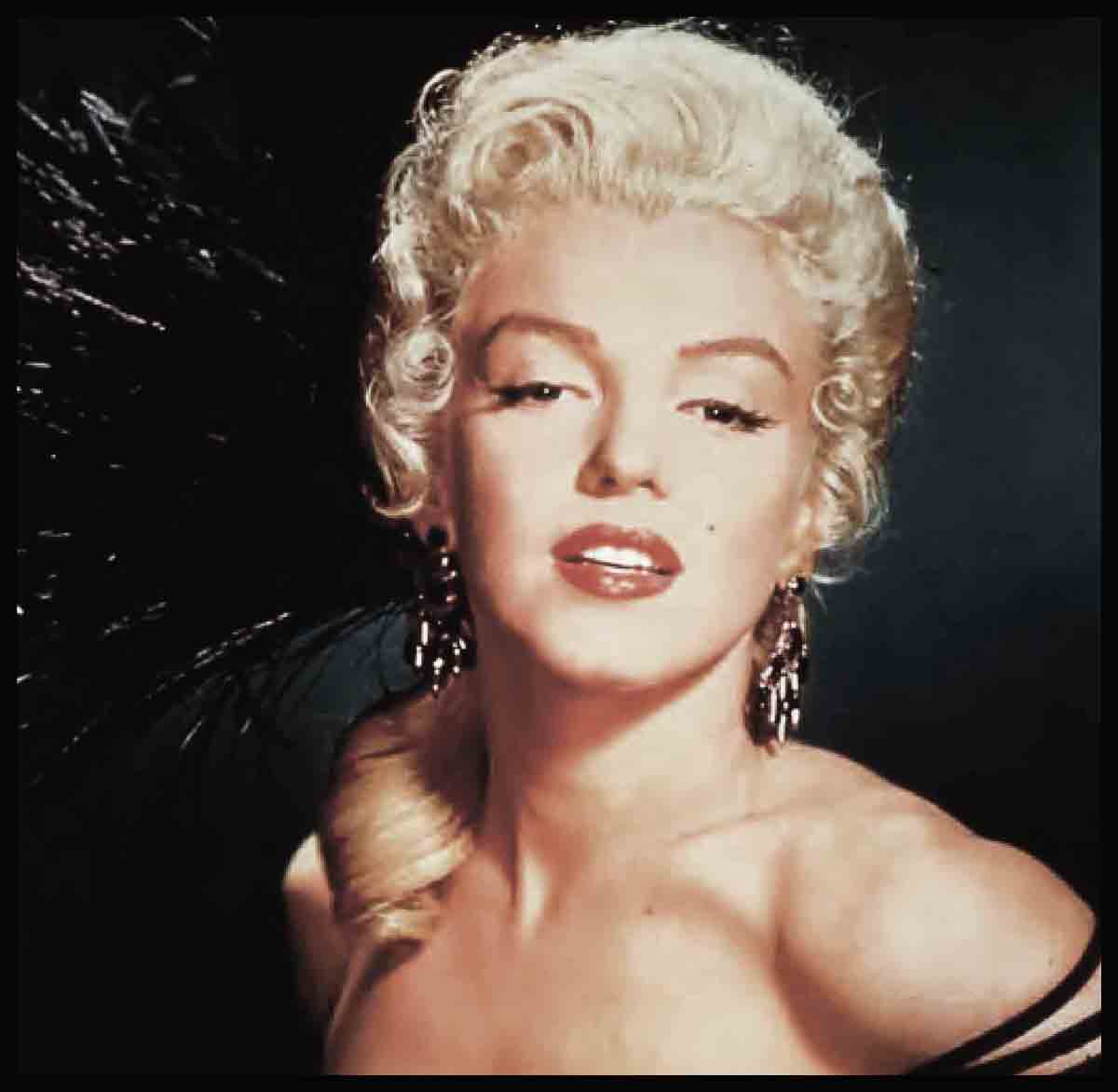
Biography Of Marilyn Monroe
PART III
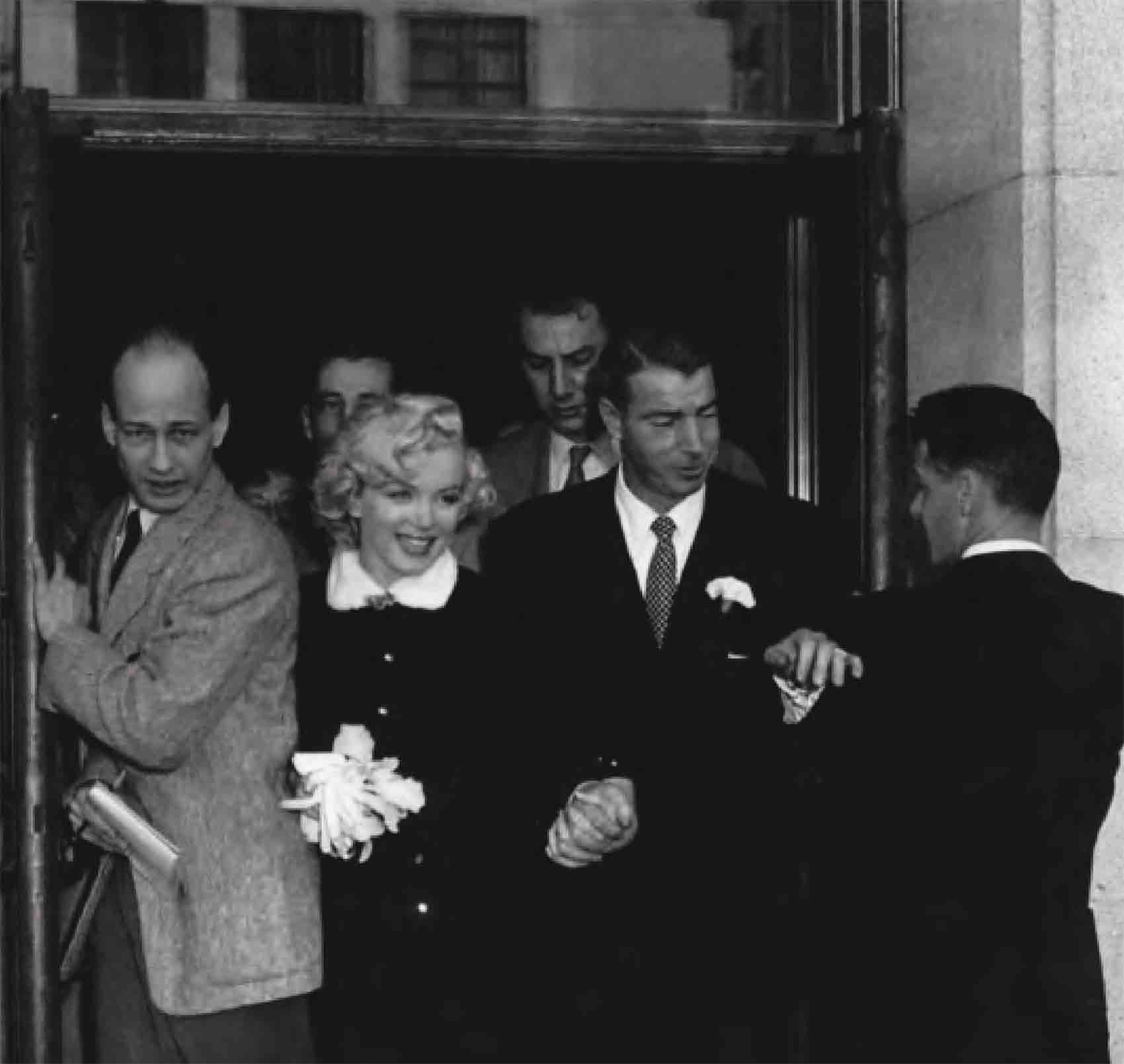
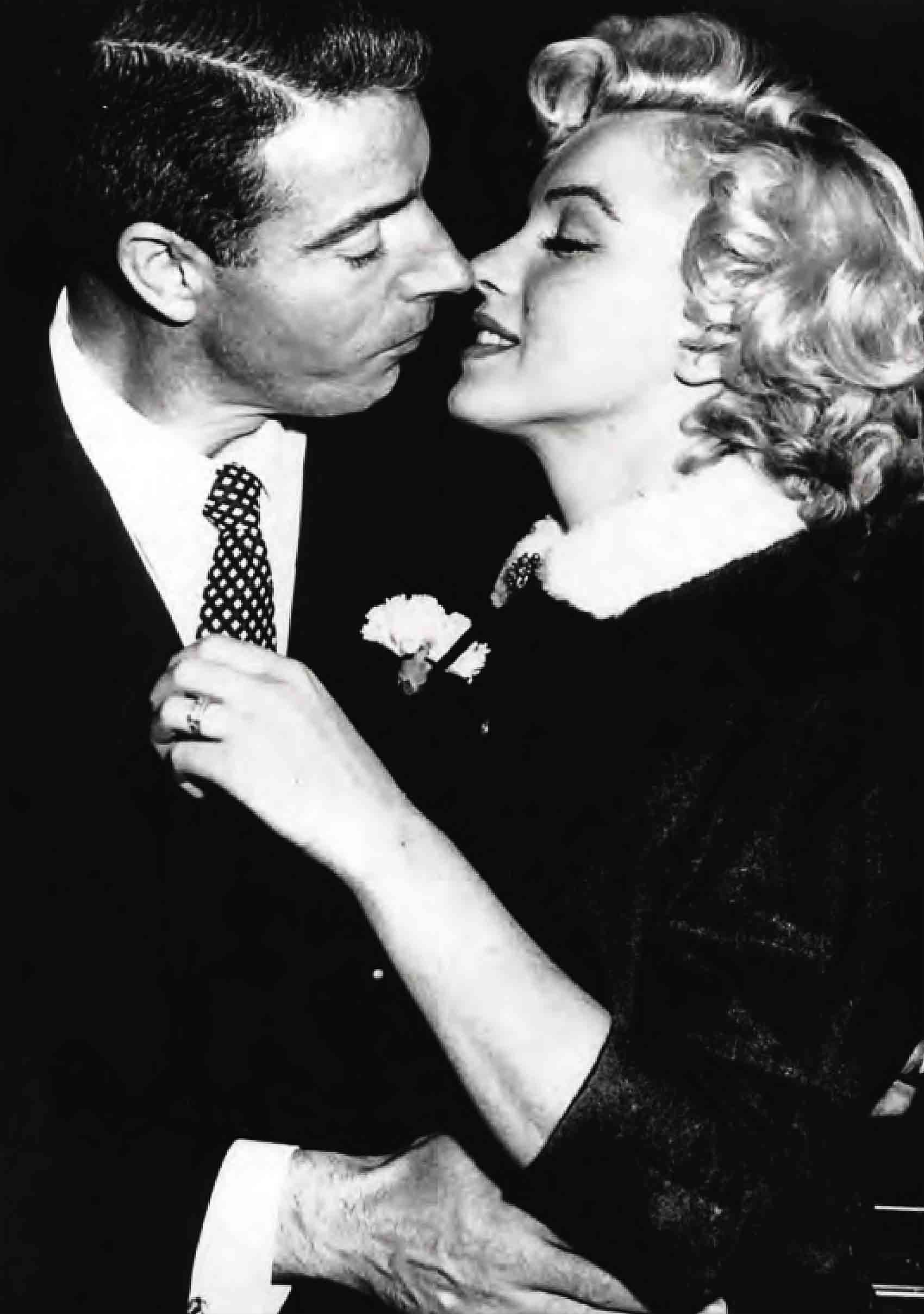
January 14, 1954 Marilyn Monroe marries former baseball champion Joe DiMaggio, a “living legend” of American sports, in San Francisco. He has courted her assiduously for a year. The marriage receives worldwide publicity, and Marilyn is able to get 20th Century-Fox to drop the disciplinary measures resulting from her breach of contract. The newlyweds’ honeymoon begins in Japan.
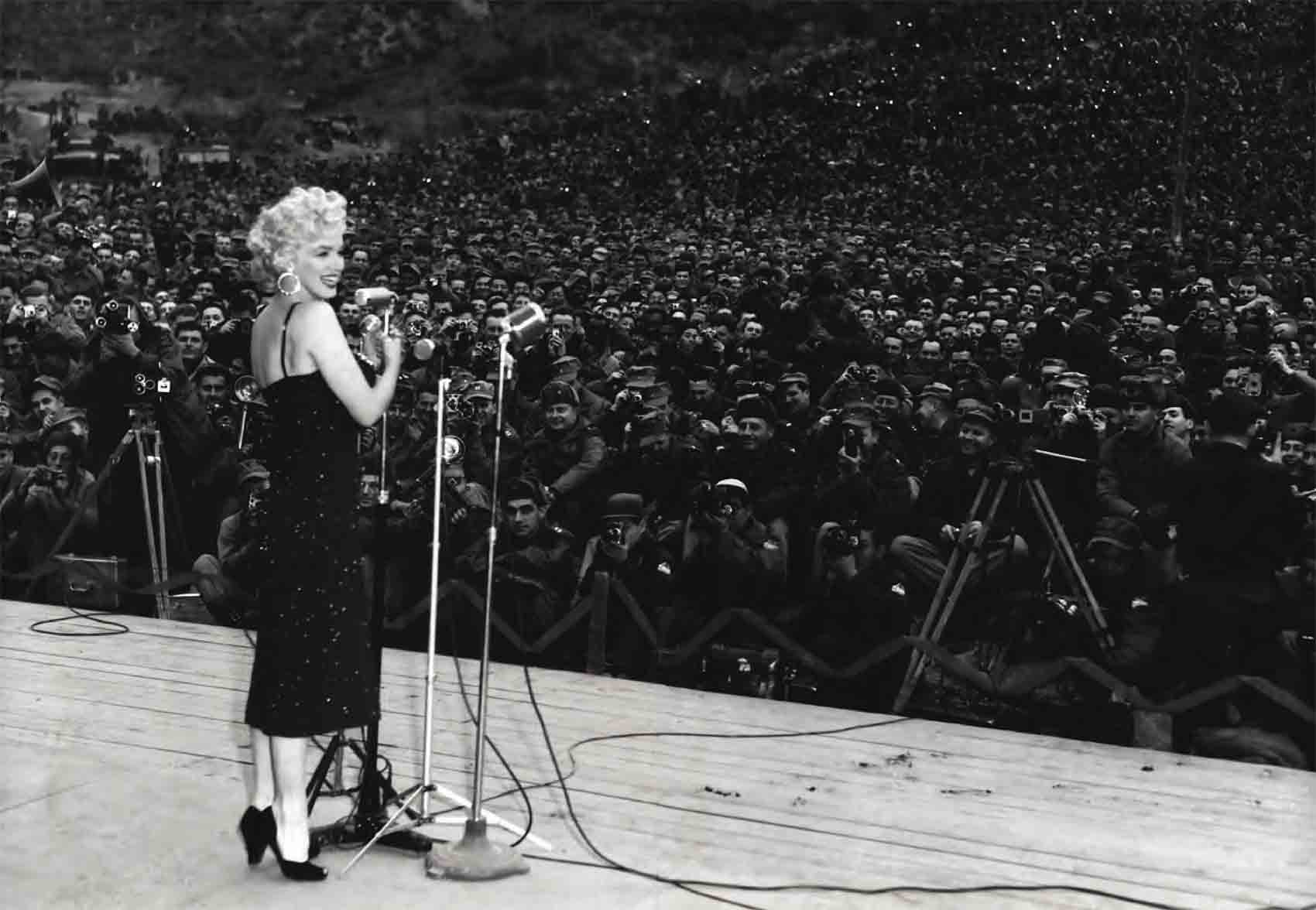
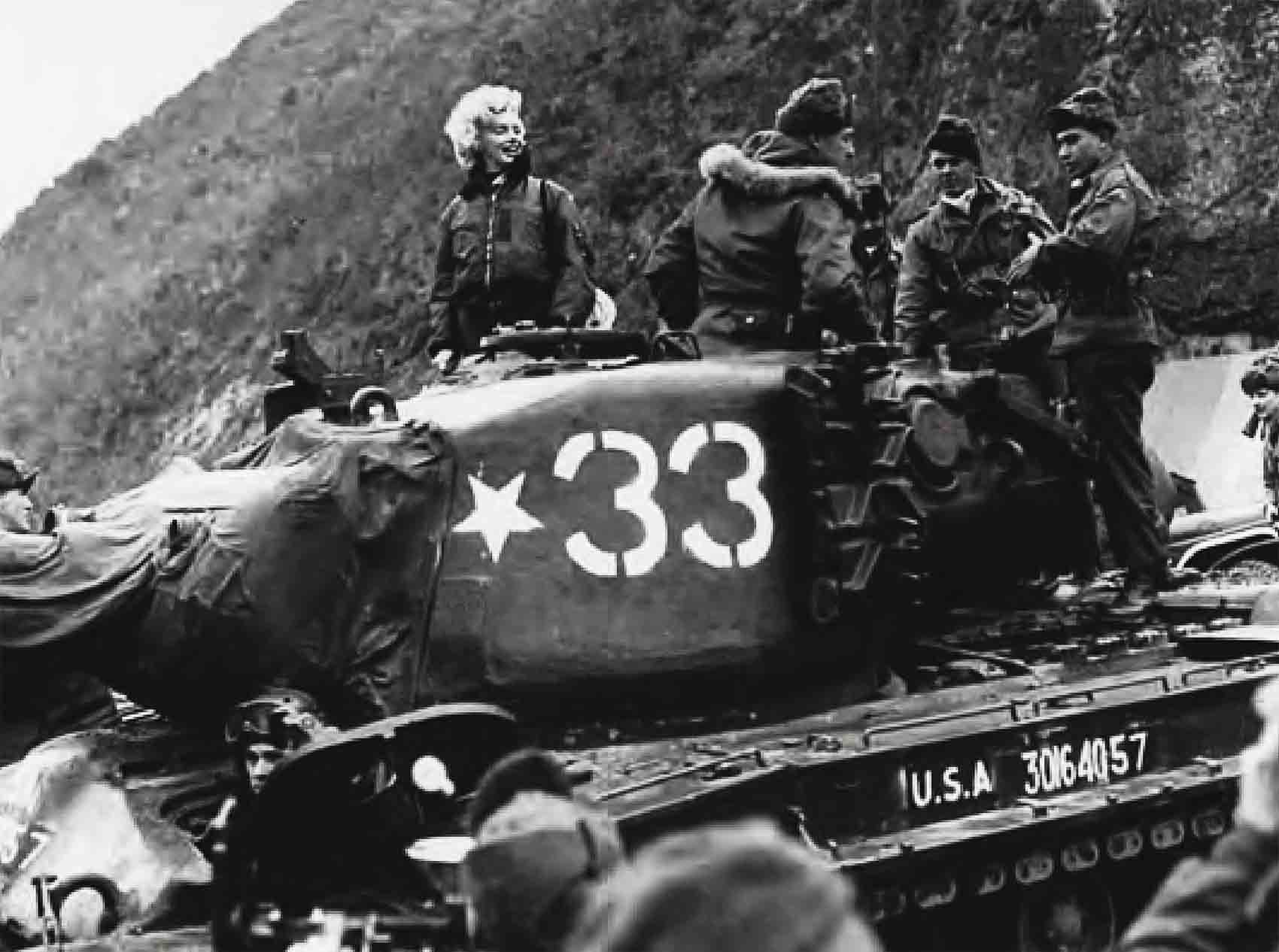
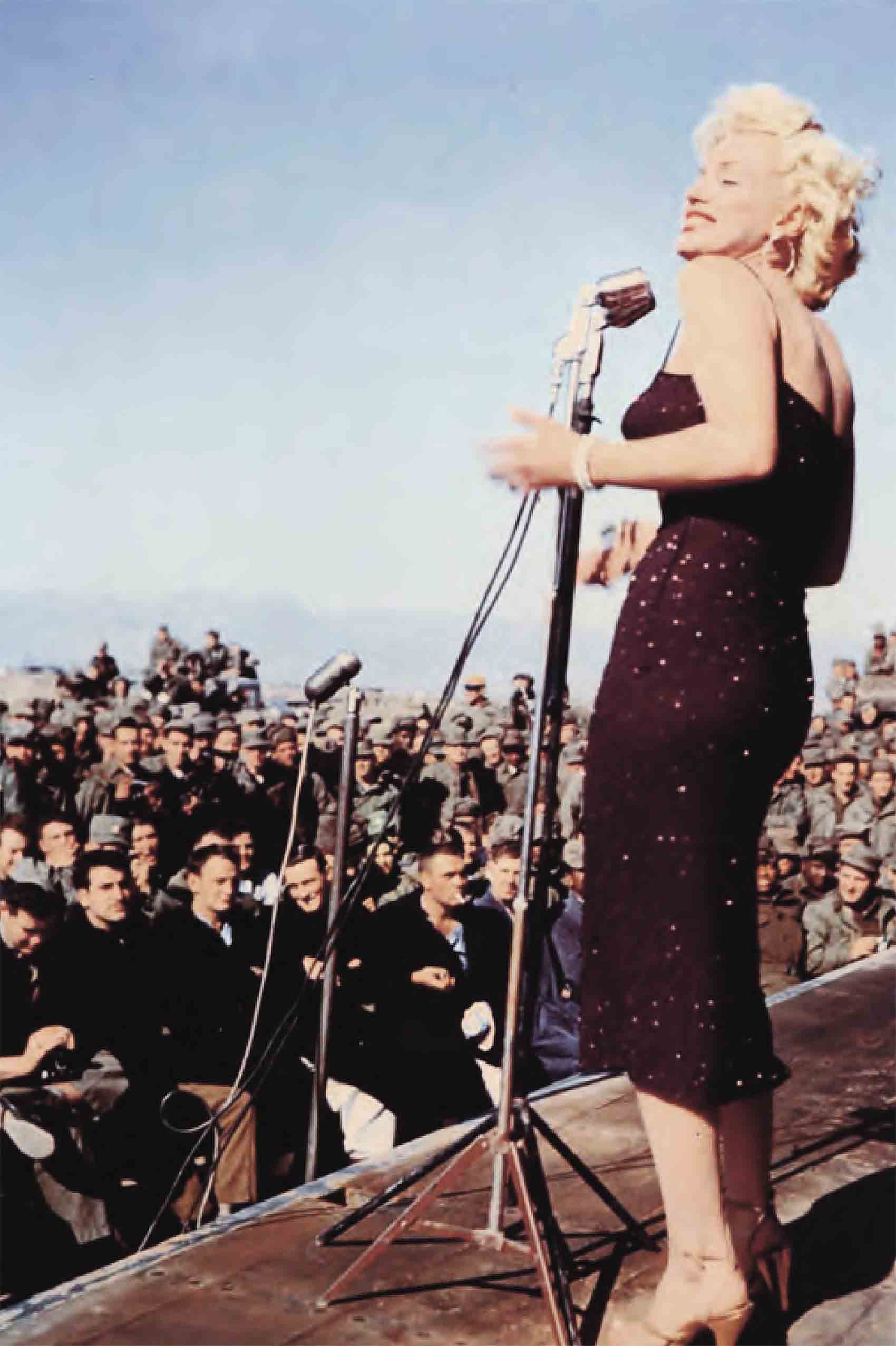
February 16, 1954 Marilyn interrupts her honeymoon and flies to Seoul to entertain the troops stationed in Korea. She later calls her appearance before the soldiers one of the high points in her life. “I never felt like a star before in my heart. It was so wonderful to look down and see a fellow smiling at me,” Marilyn admitted to her friend Amy Greene.
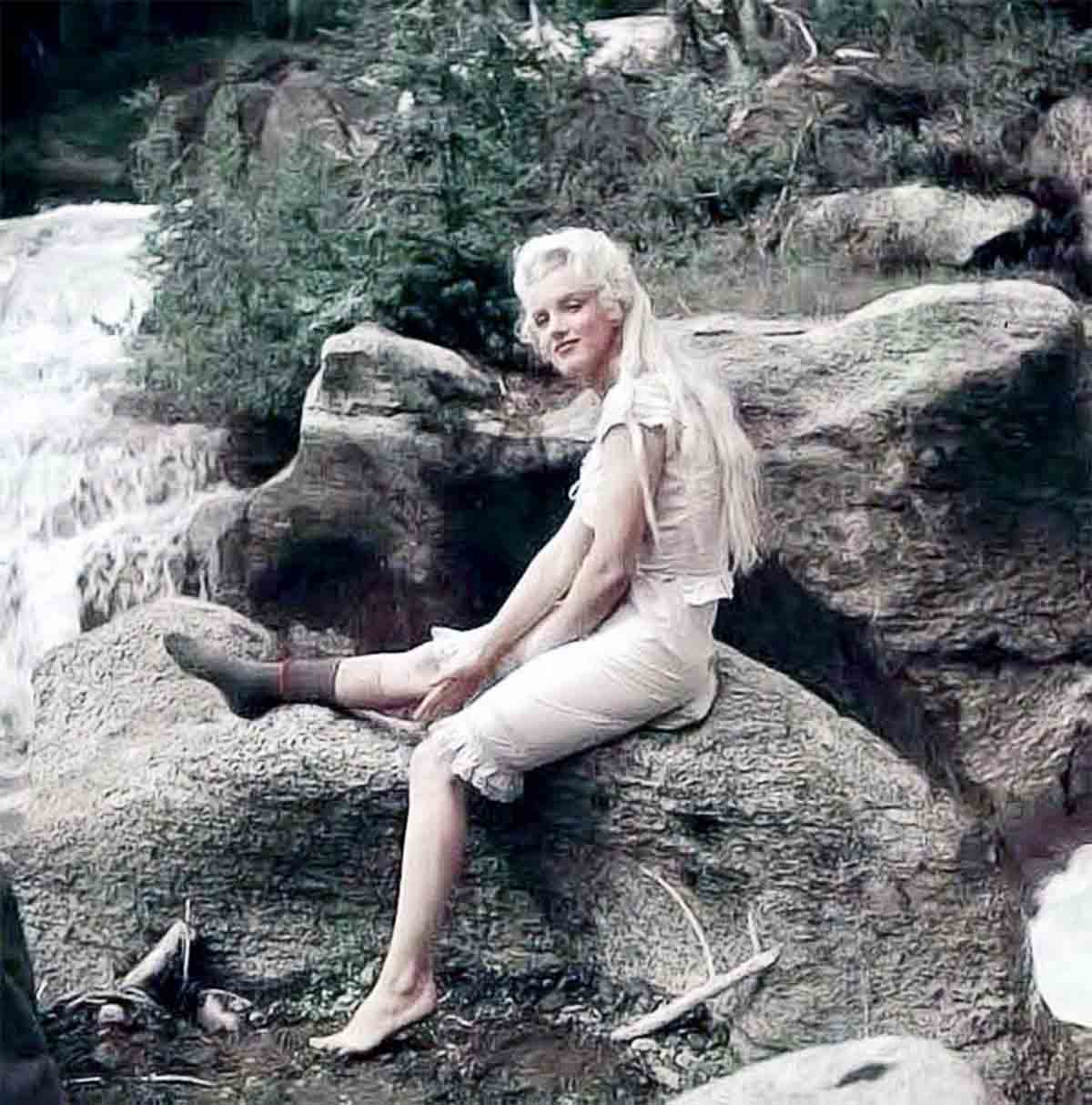
Publicity still for River of No Return. Under the direction of Otto Preminger, Marilyn played the bar singer Kay, who starts a new life after many adventures with the widowed Matt Calder (Robert Mitchum) and his ten-year-old son Mark (Tommy Rettig). It was Marilyn’s first western.
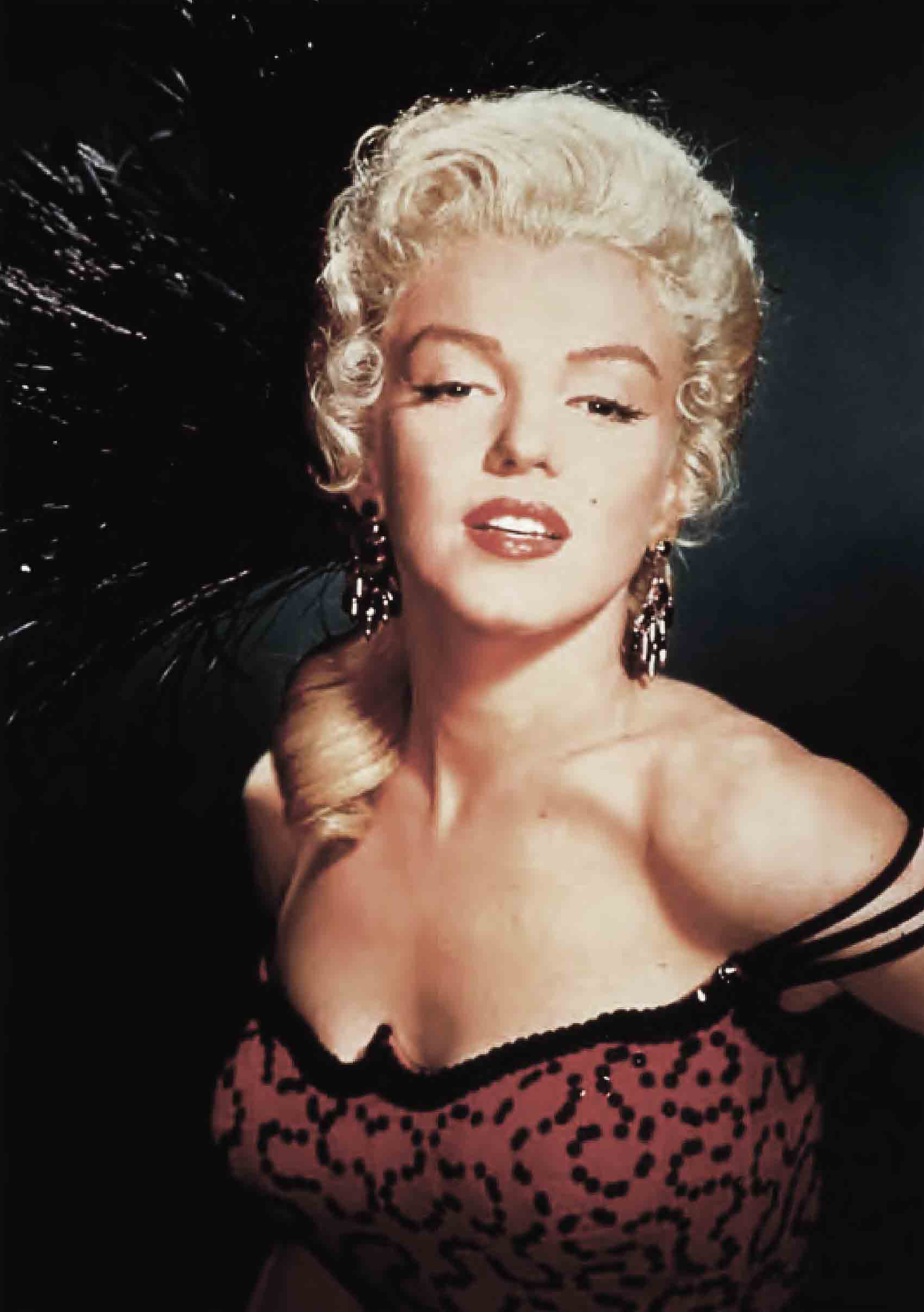
August 10, 1954 Filming for The Seven Year Itch, directed by Billy Wilder, begins. Marilyn plays the luscious blonde who lives in the apartment over that belonging to the conventional but susceptible costar Tom Ewell. When his wife goes on vacation, he is inspired to bold, erotic fantasies.
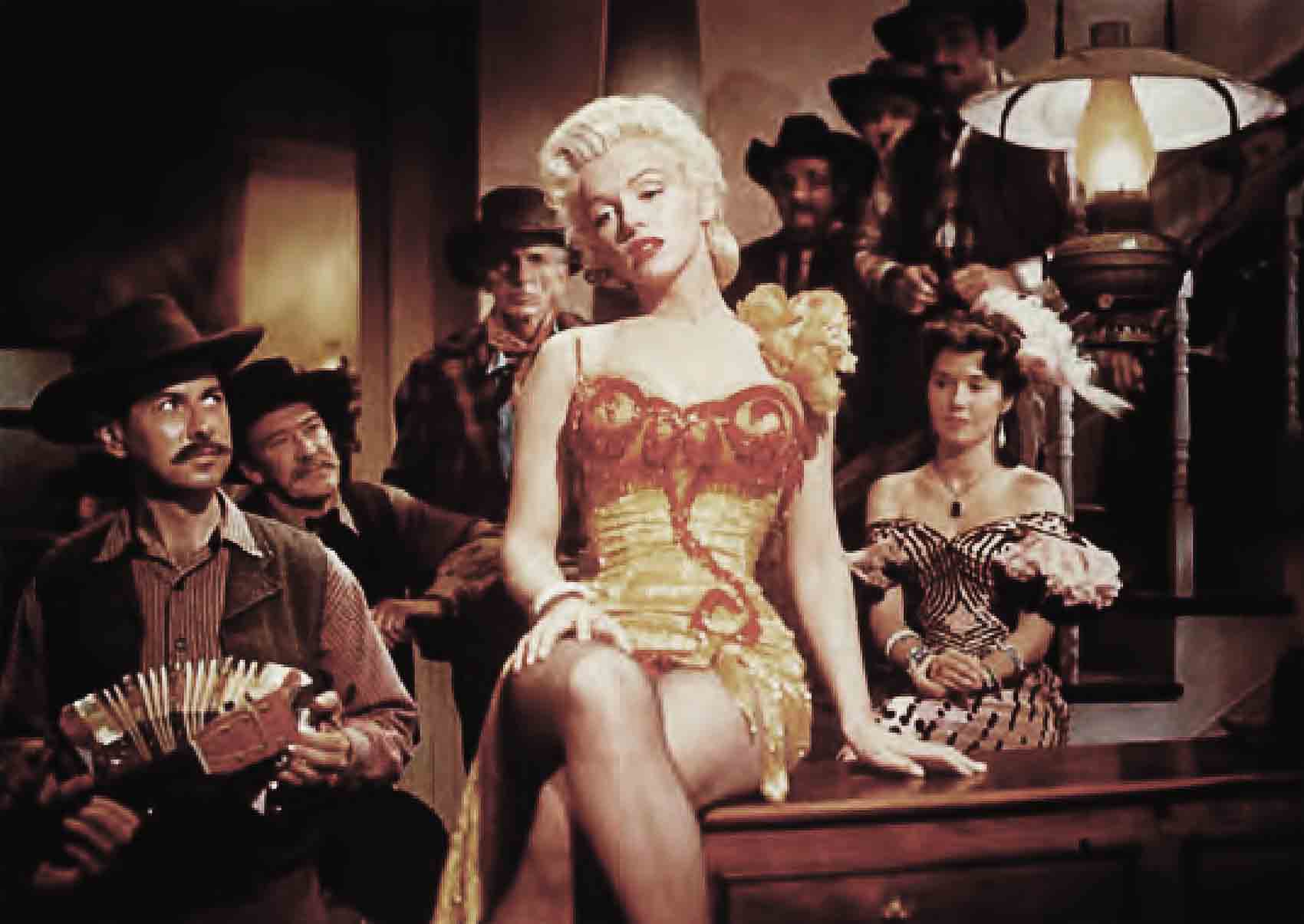
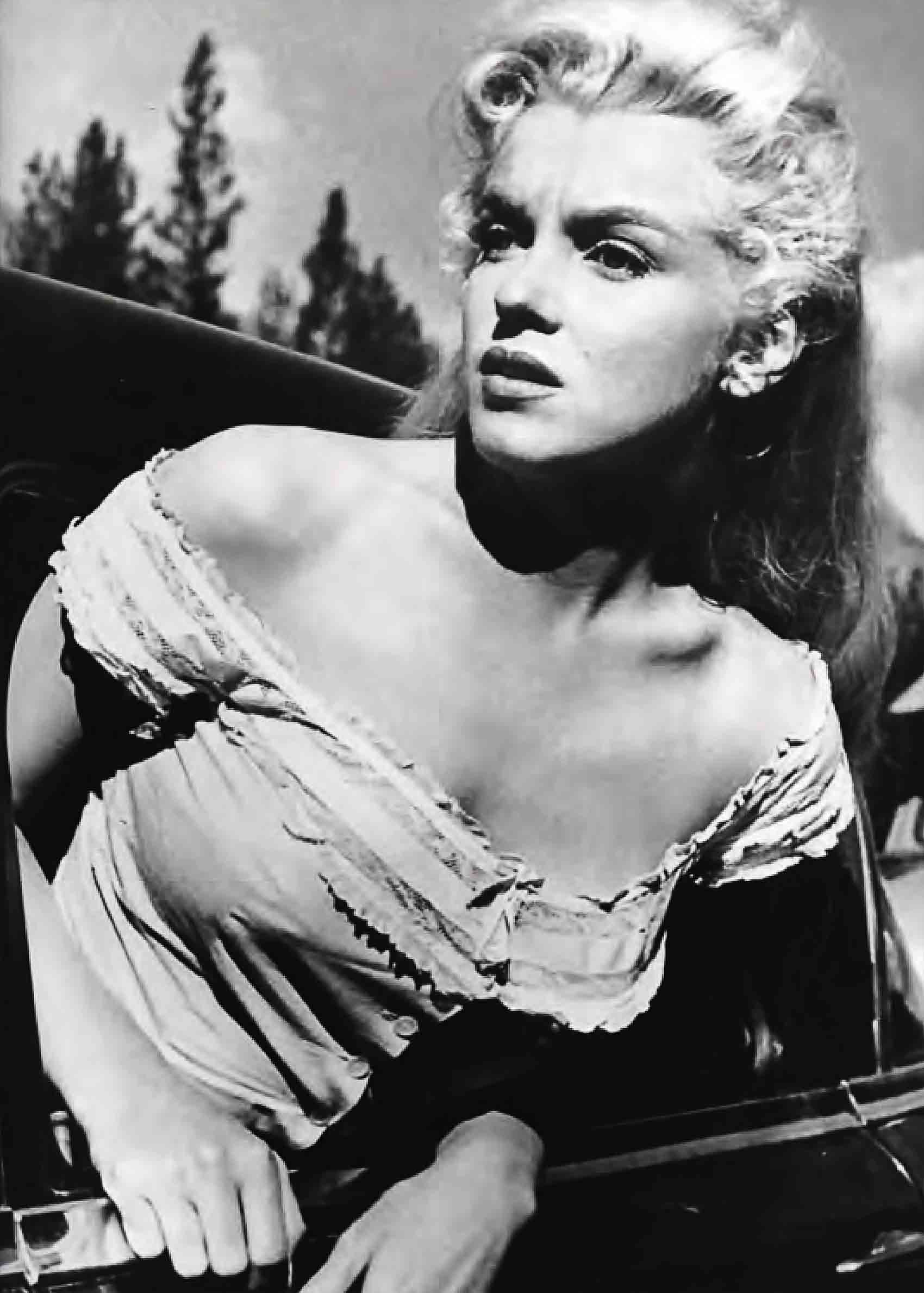
September 15, 1954 The famous scene on the subway grate from The Seven Year Itch is filmed in New York. Tipped off by the press through the studio’s publicity department, thousands gather behind wooden police barriers to see the lovely young woman’s snow-white skirt billow up to her shoulders—to the amusement of Marilyn and Tom Ewell. Less amused is Joe DiMaggio, who watches the scene in the crowd and thereafter engages in one of his and Marilyn’s worst marital fights.
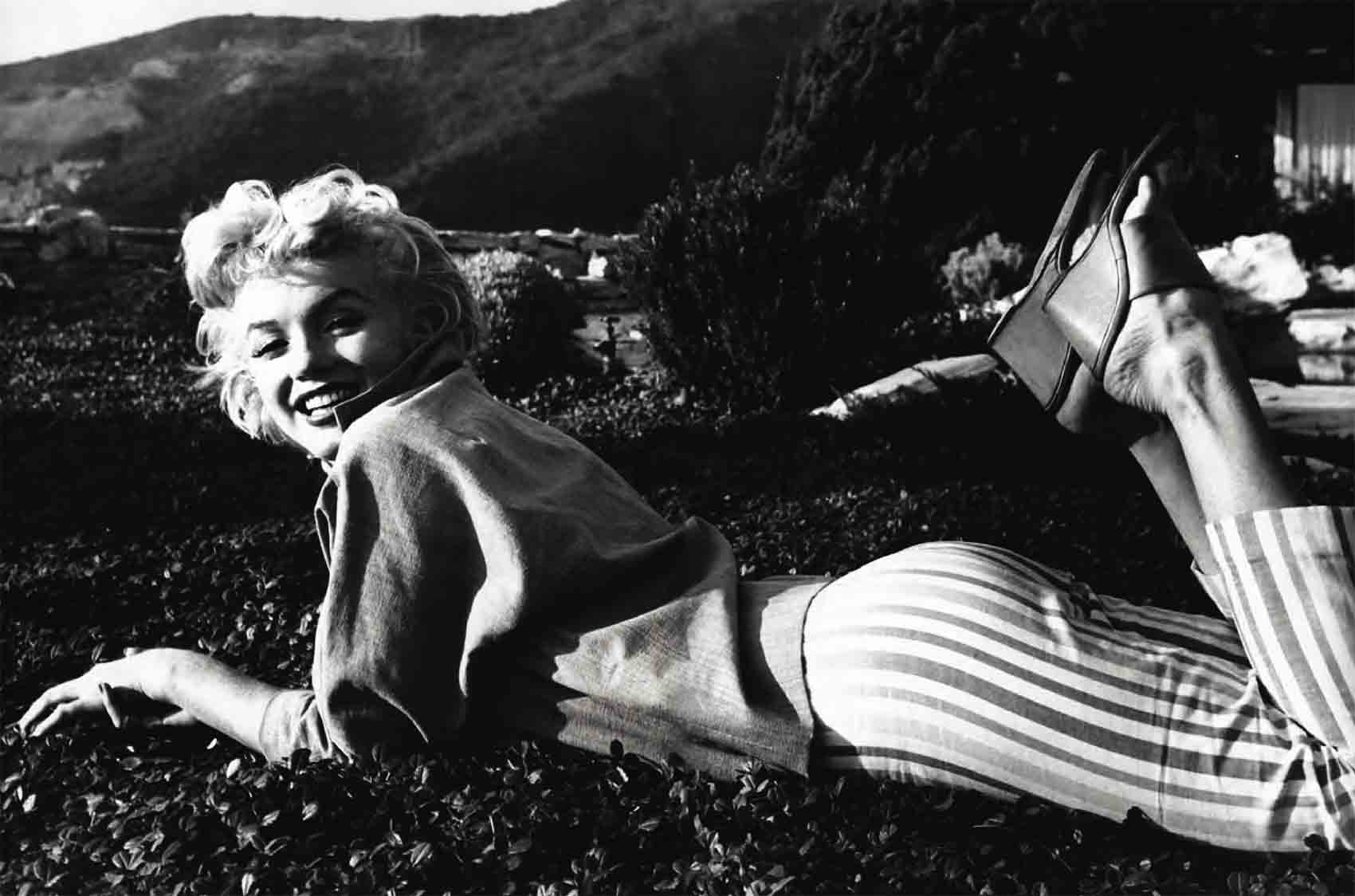
October 5, 1954 Marilyn and Joe separate officially. “Our marriage wasn’t a happy one,” she said later.
October 27, 1954 Marilyn files for divorce in Santa Monica.
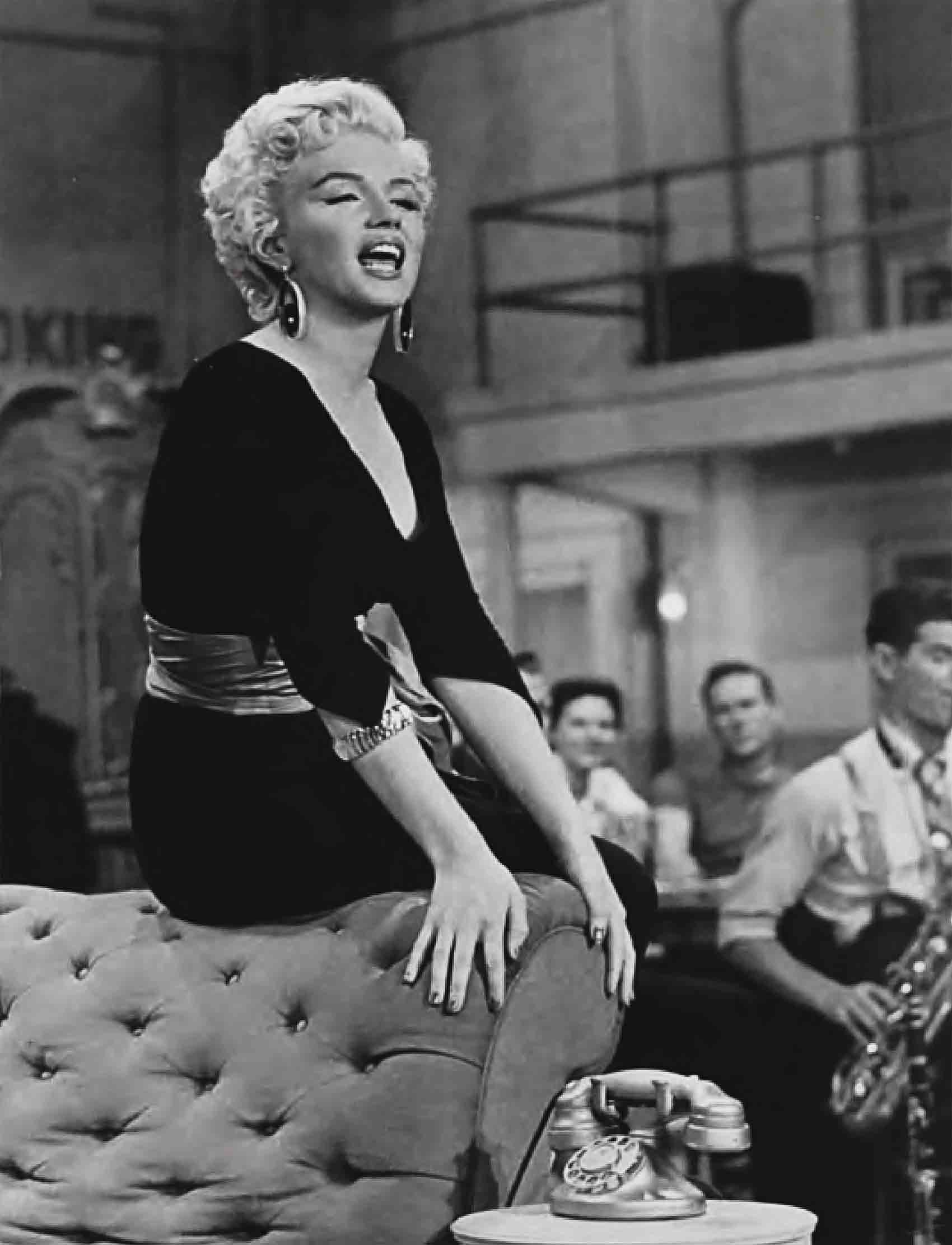
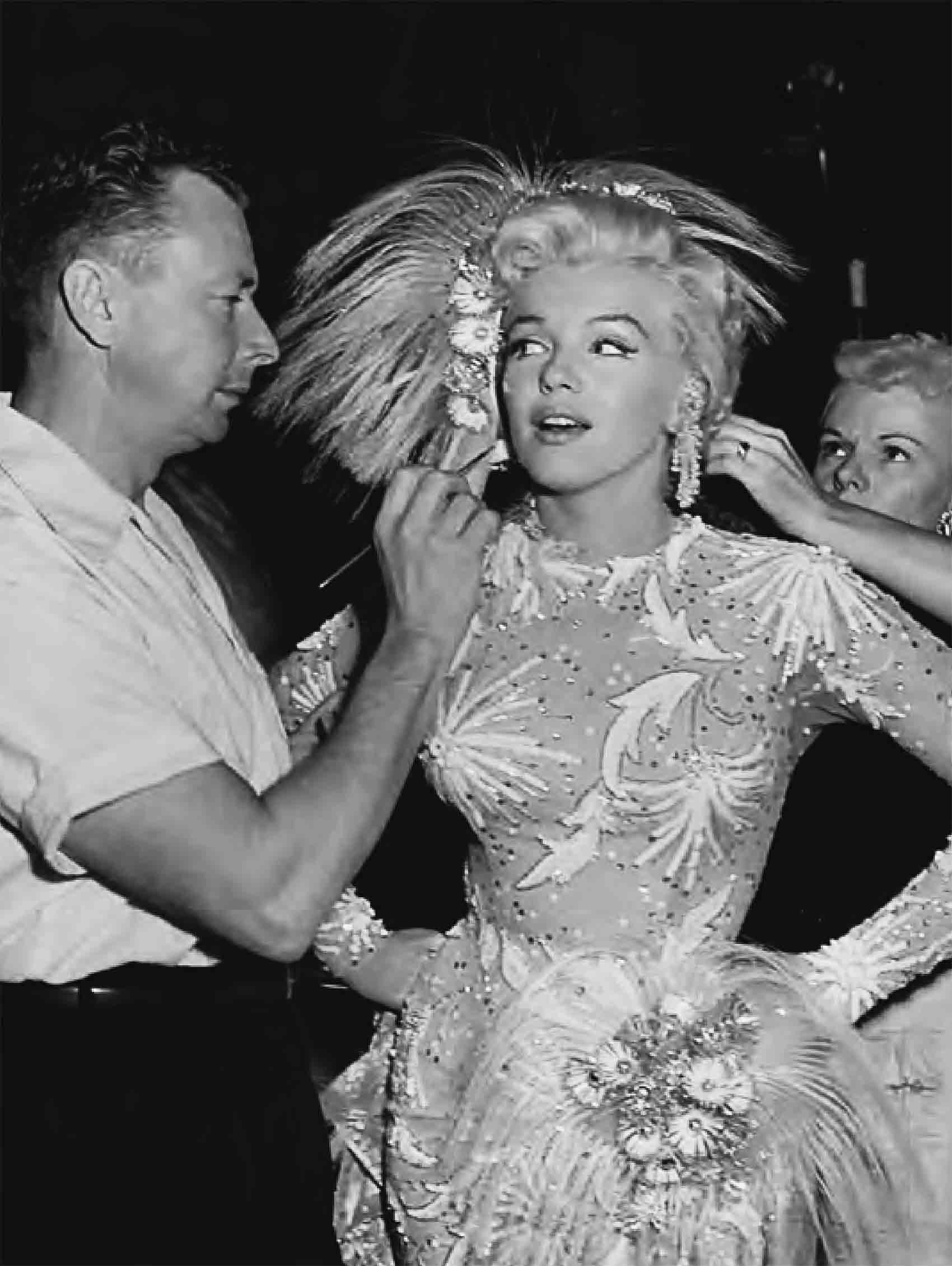
November 6, 1954 Hollywood’s film society celebrates Marilyn Monroe on the occasion of the completion of The Seven Year Itch at Romanoffs Beverly Hills restaurant. The signatures in her honor on the huge “Marilyn” souvenir portrait include those of Humphrey Bogart, Lauren Bacall, Claudette Colbert, William Holden, James Stewart, Susan Hayward, Gary Cooper, and Doris Day. Hollywood’s film moguls, including Sam Goldwyn, Jack Warner, and Darryl Zanuck, pose for the cameras. For the first time Marilyn meets her childhood idol, Clark Gable.
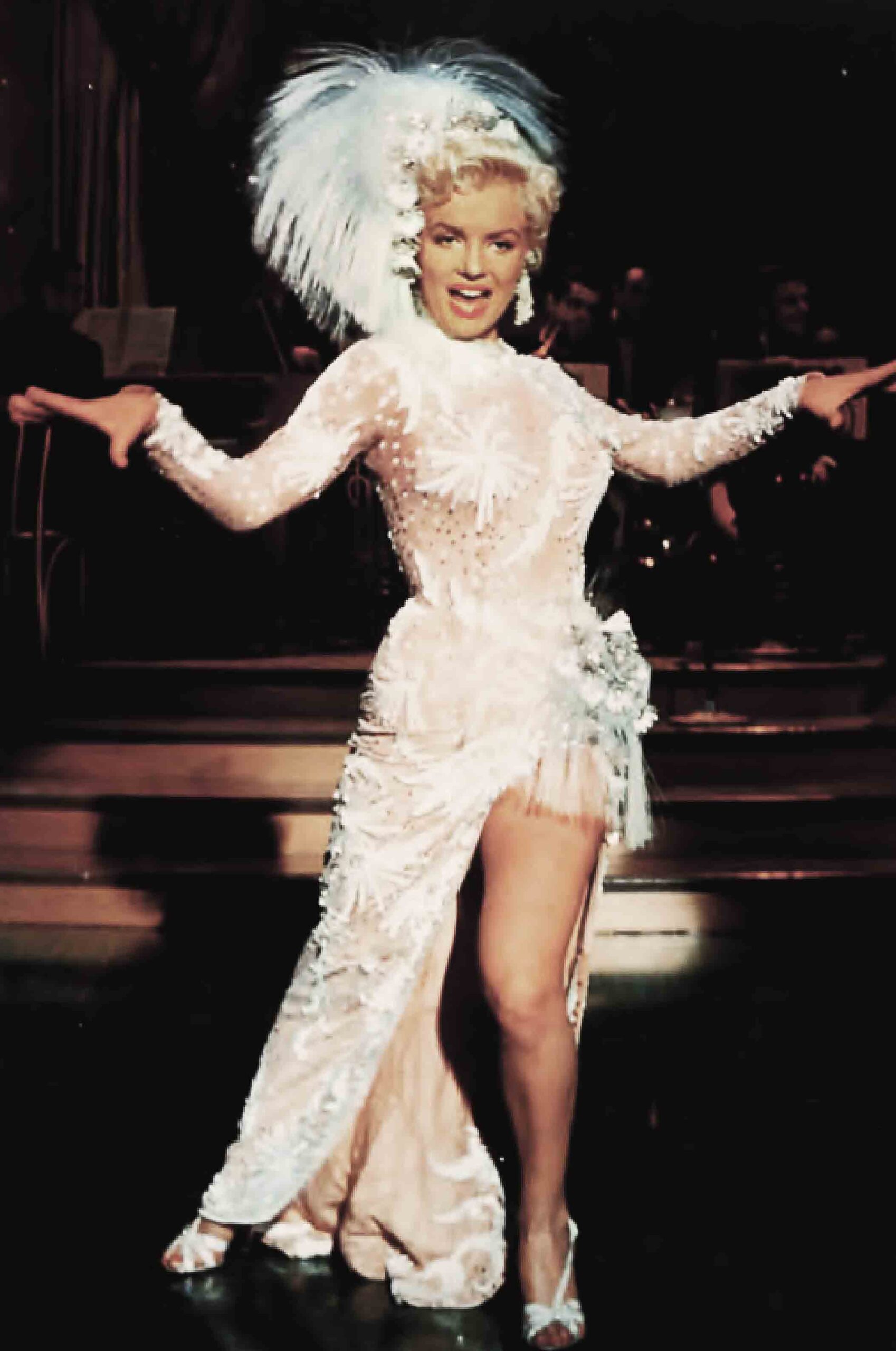
Nevertheless, the celebrated star decides to turn her back on Hollywood. Shortly before Christmas 1954 she puts on a dark wig and sunglasses and, with a ticket in her pocket issued to the name of “Zelda Zonk,” flies from Los Angeles to-Connecticut, where she retreats to the house of photographer Milton H. Greene. Her self-imposed exile lasts a year.
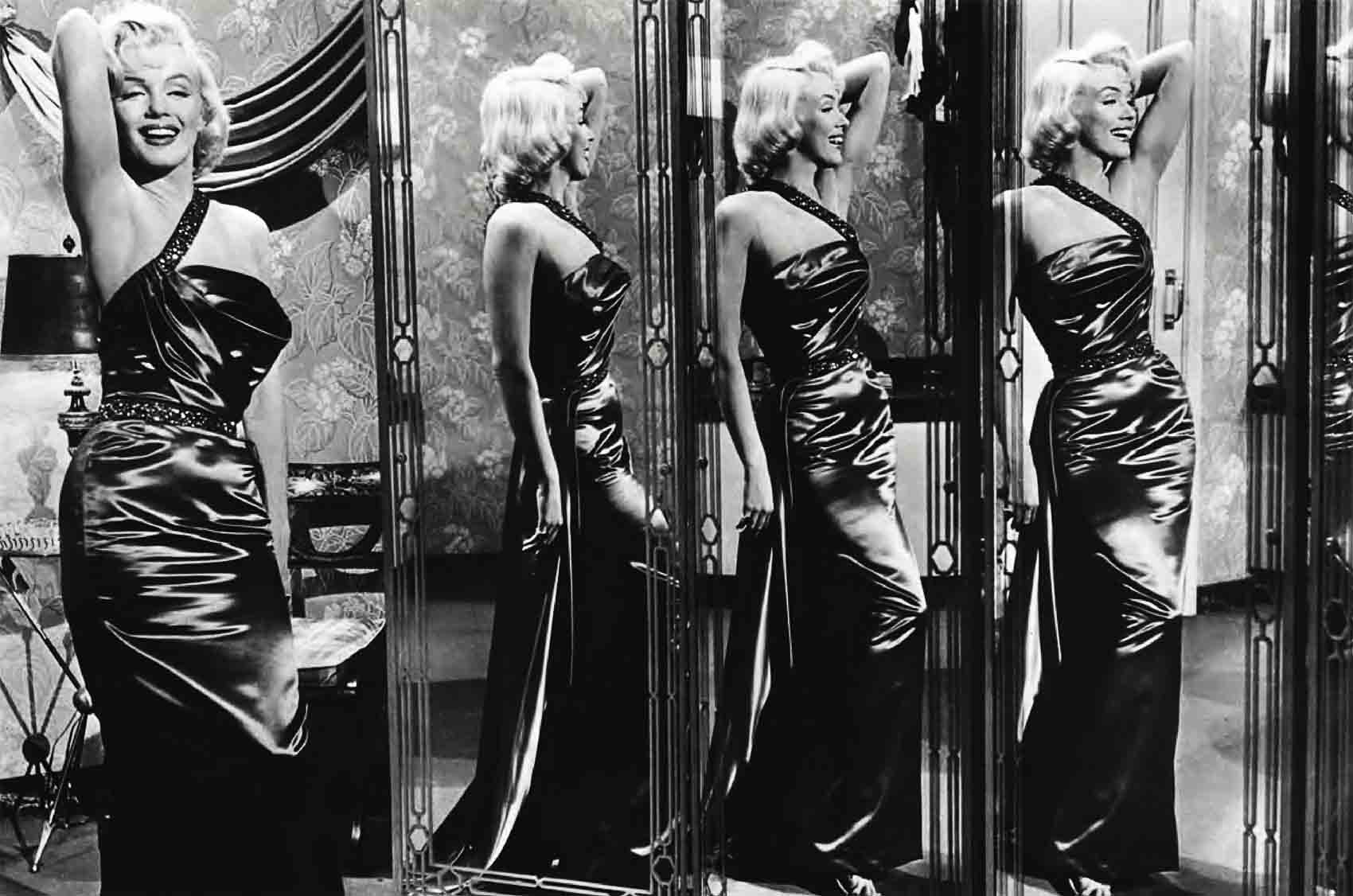
December 31, 1954 With Milton H. Greene she founds Marilyn Monroe Productions, Inc. Her enthusiastic remarks about her companion: “I feel deeply about him. I’m sincere about his genius. He’s a genius.” As her mentor, partner, and impresario, he ensures that Marilyn’s high cost of living of about $50,000 a year can be financed.
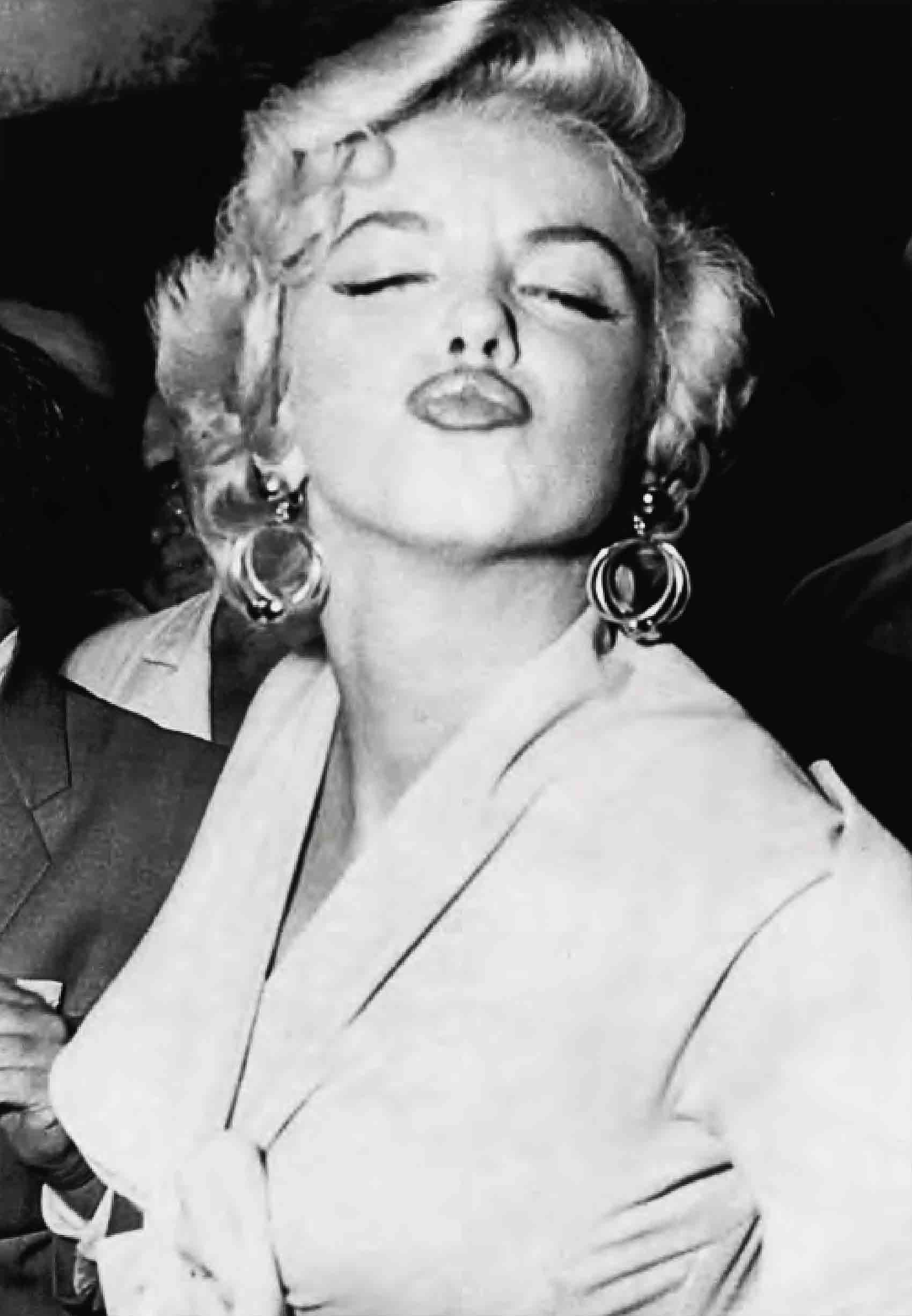
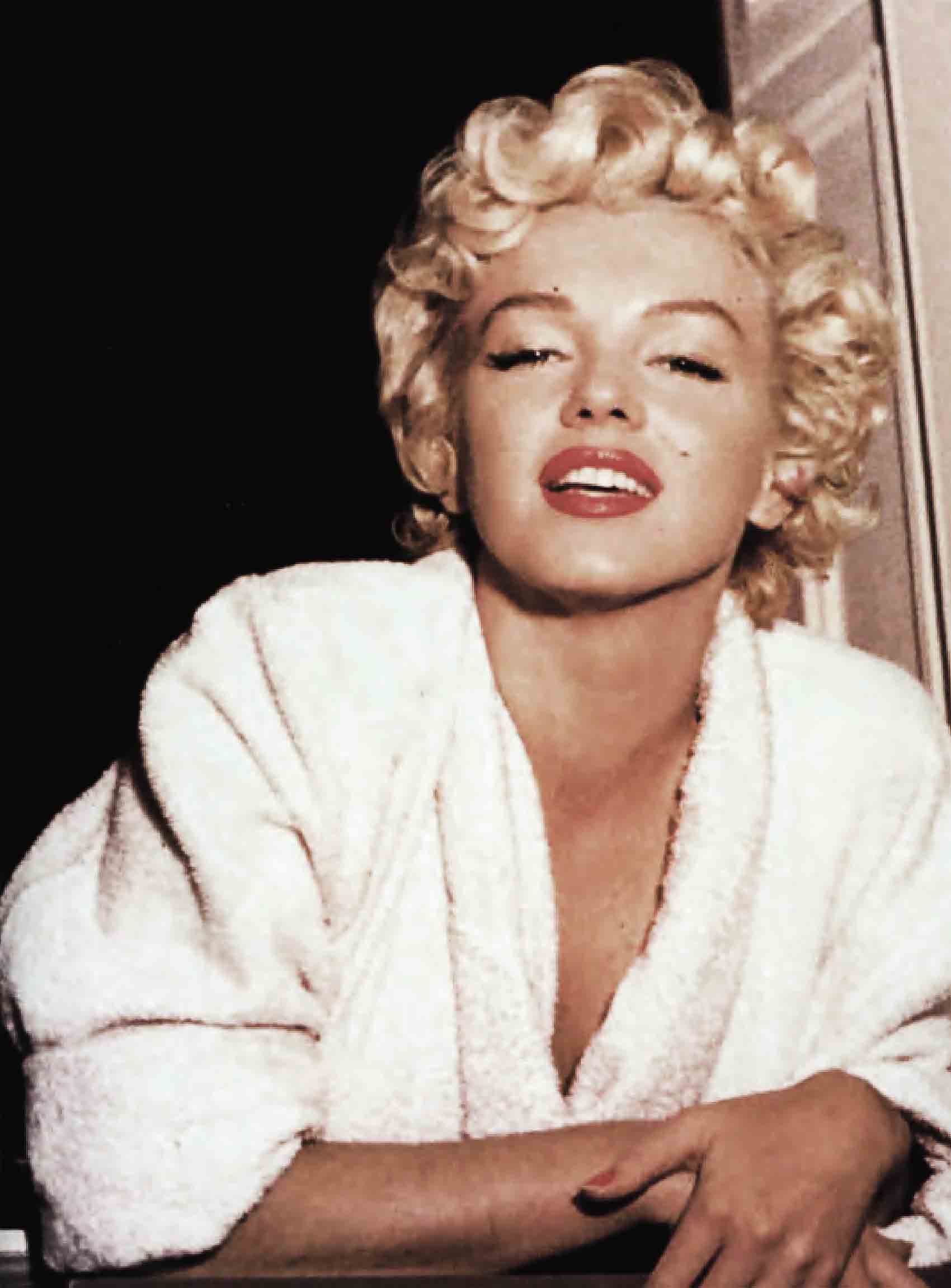
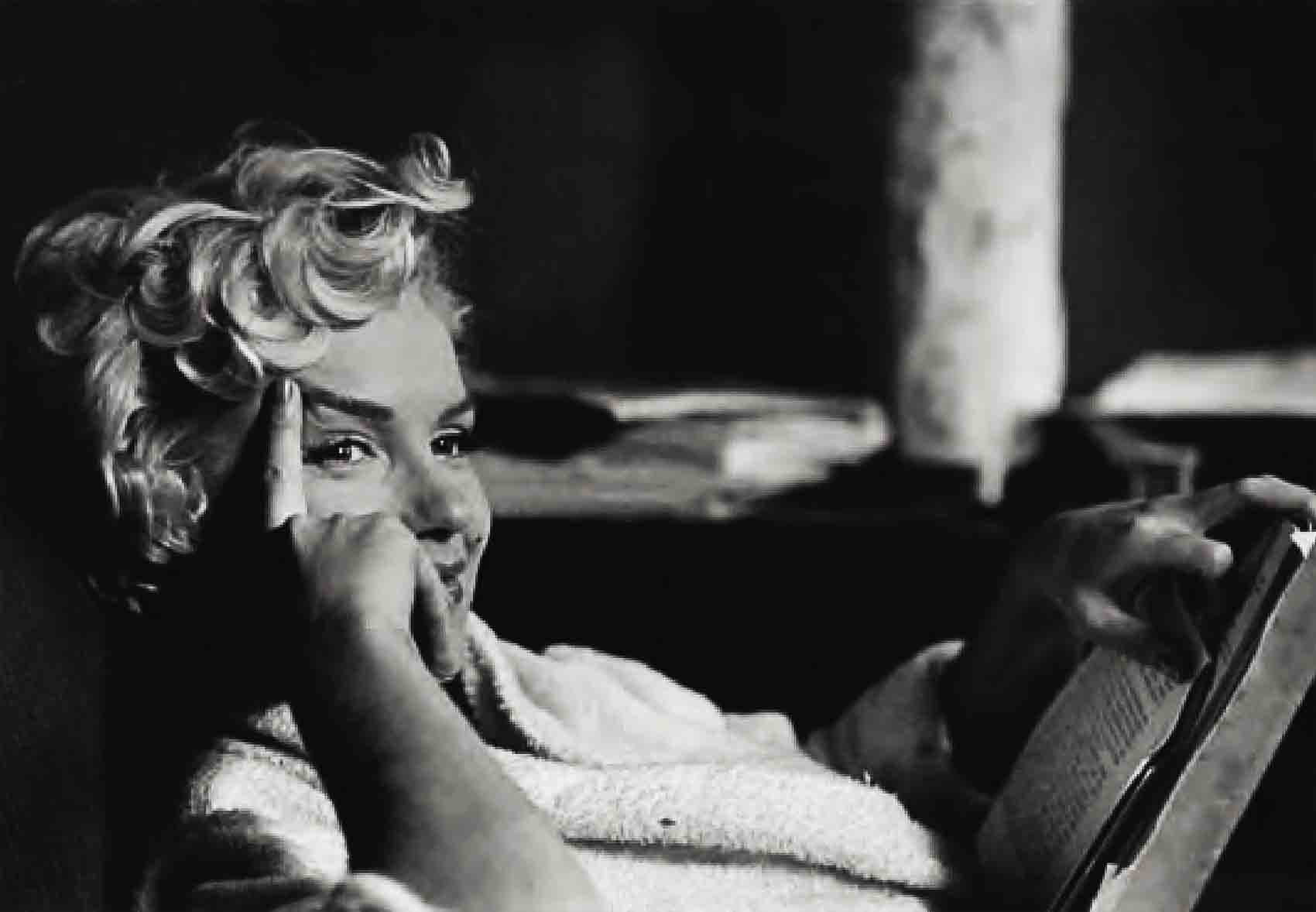
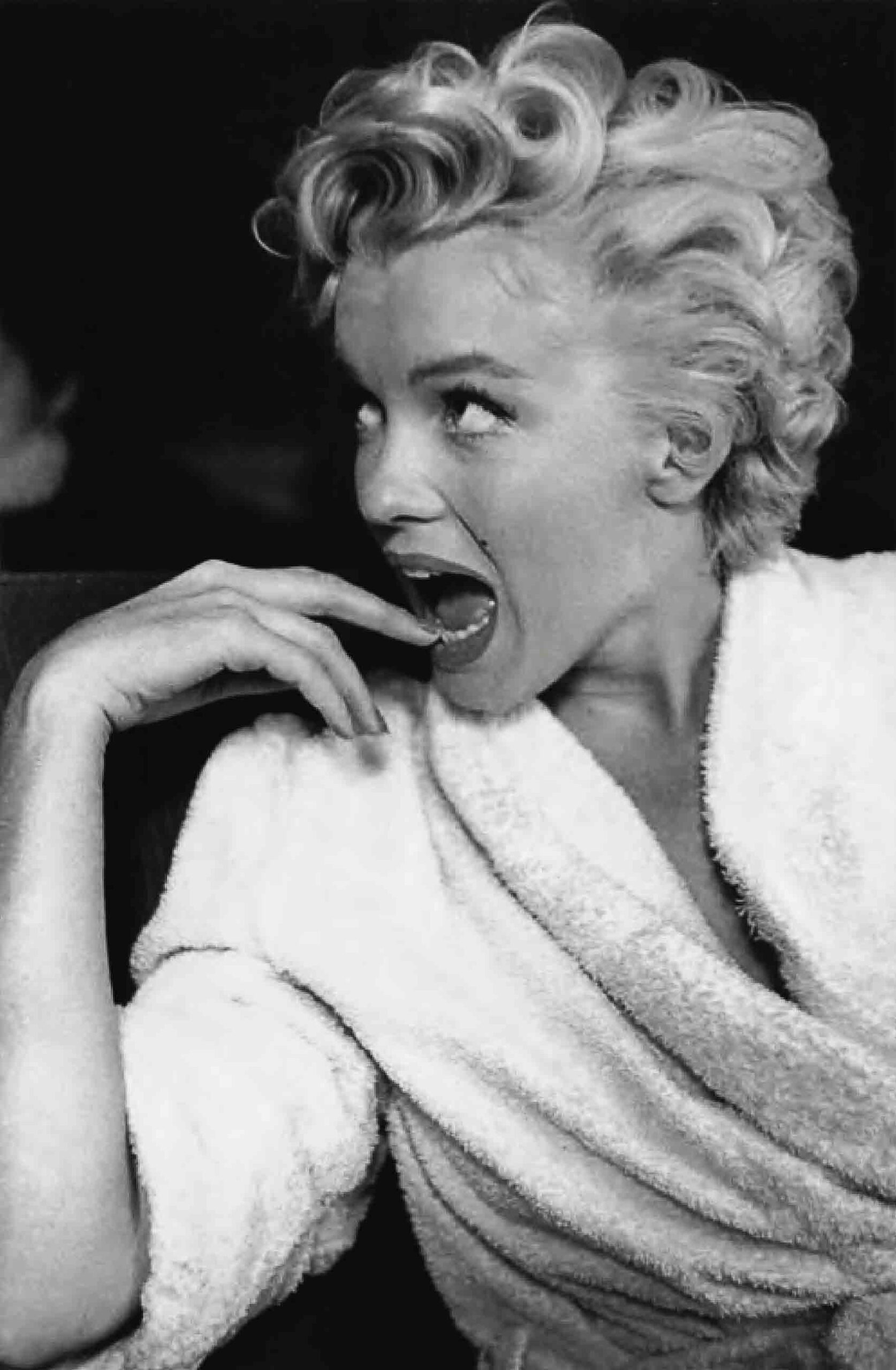
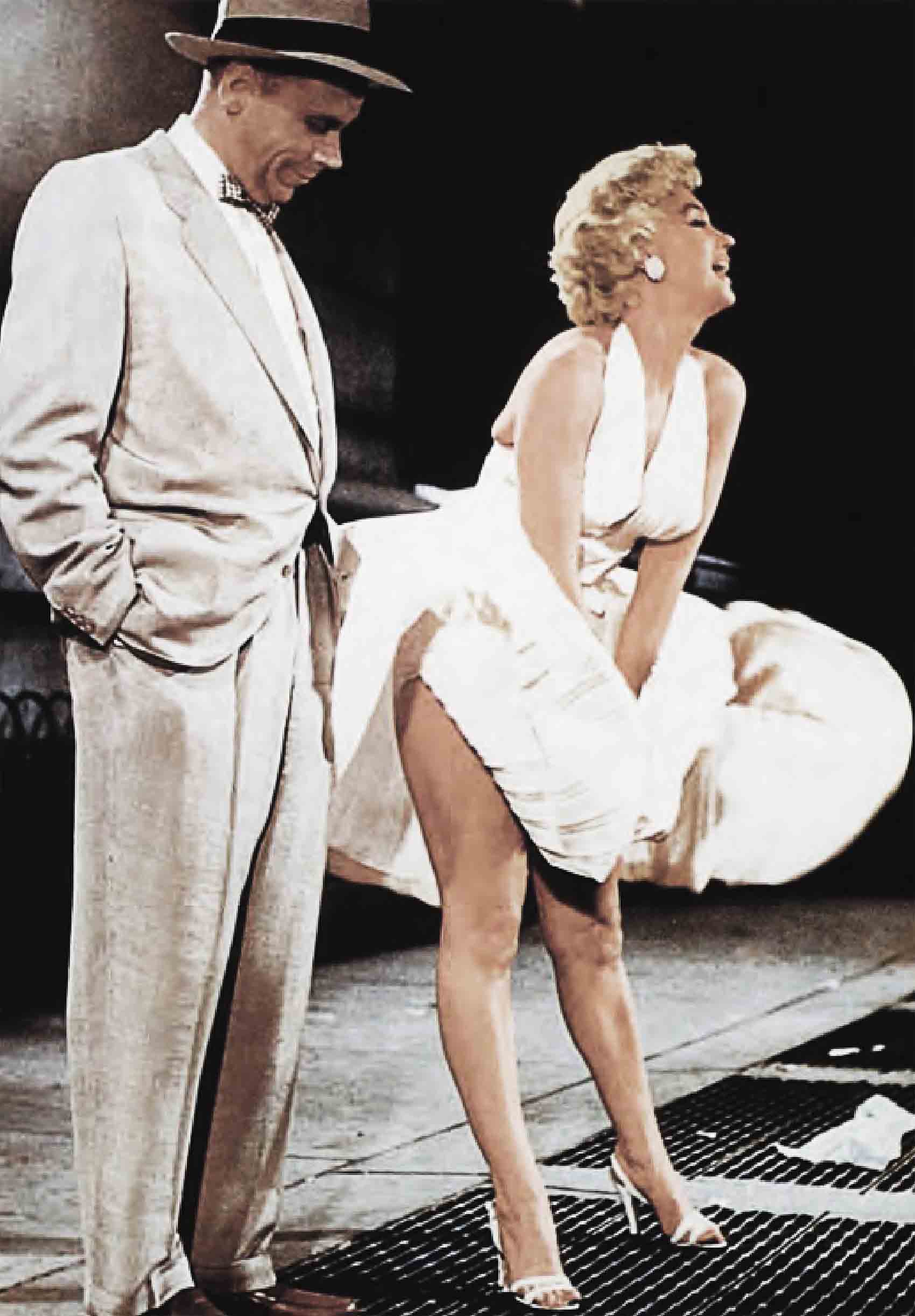
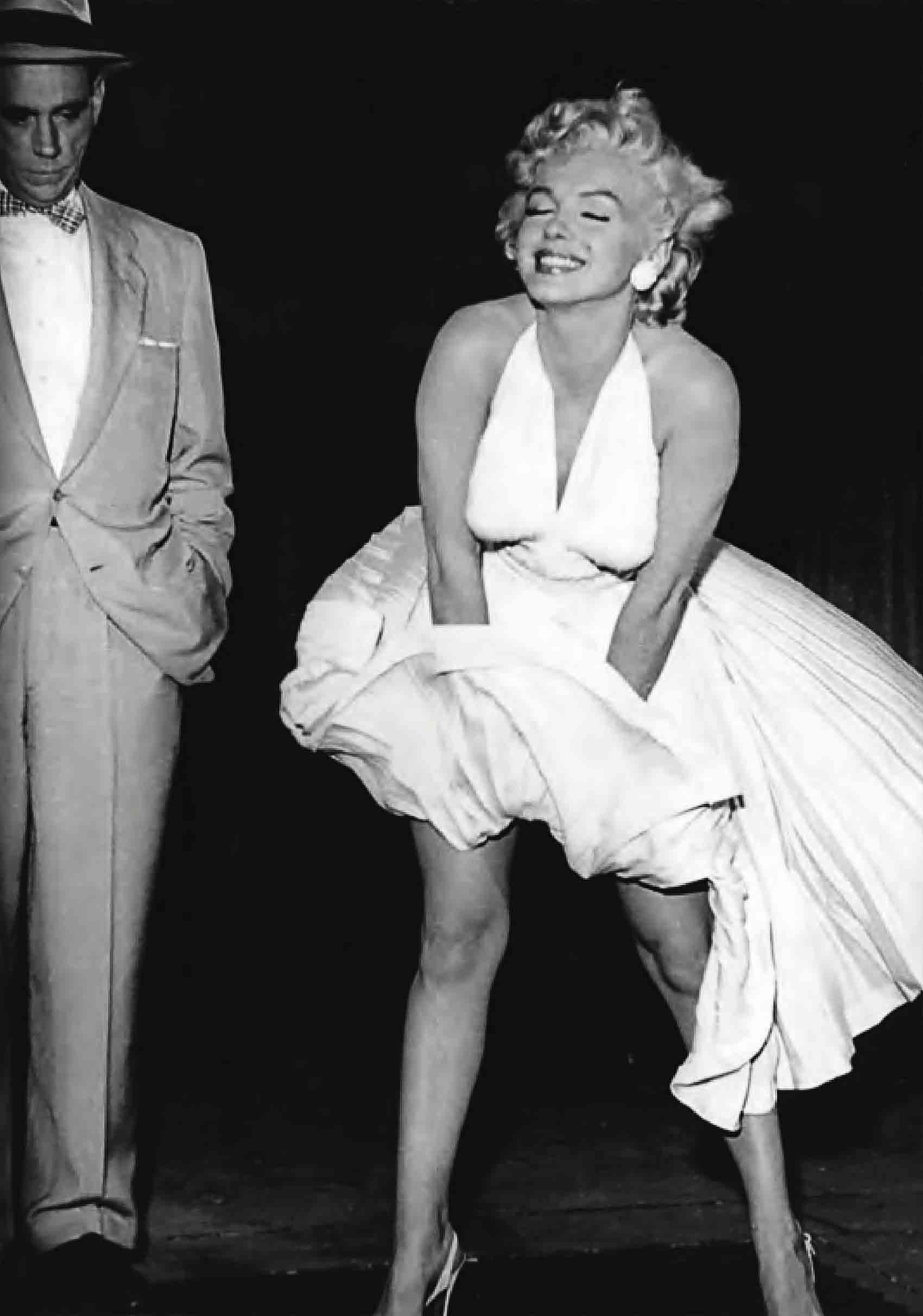
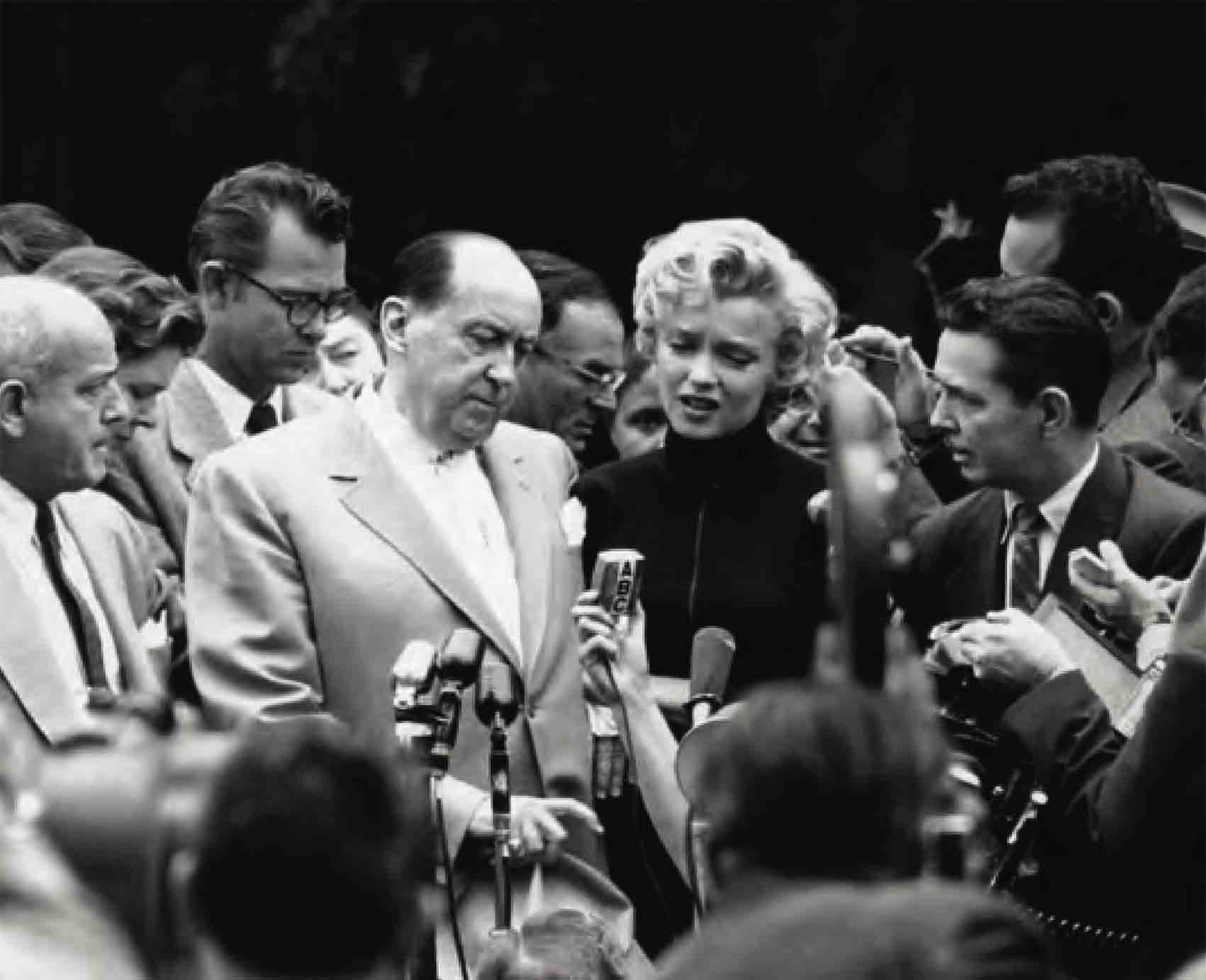
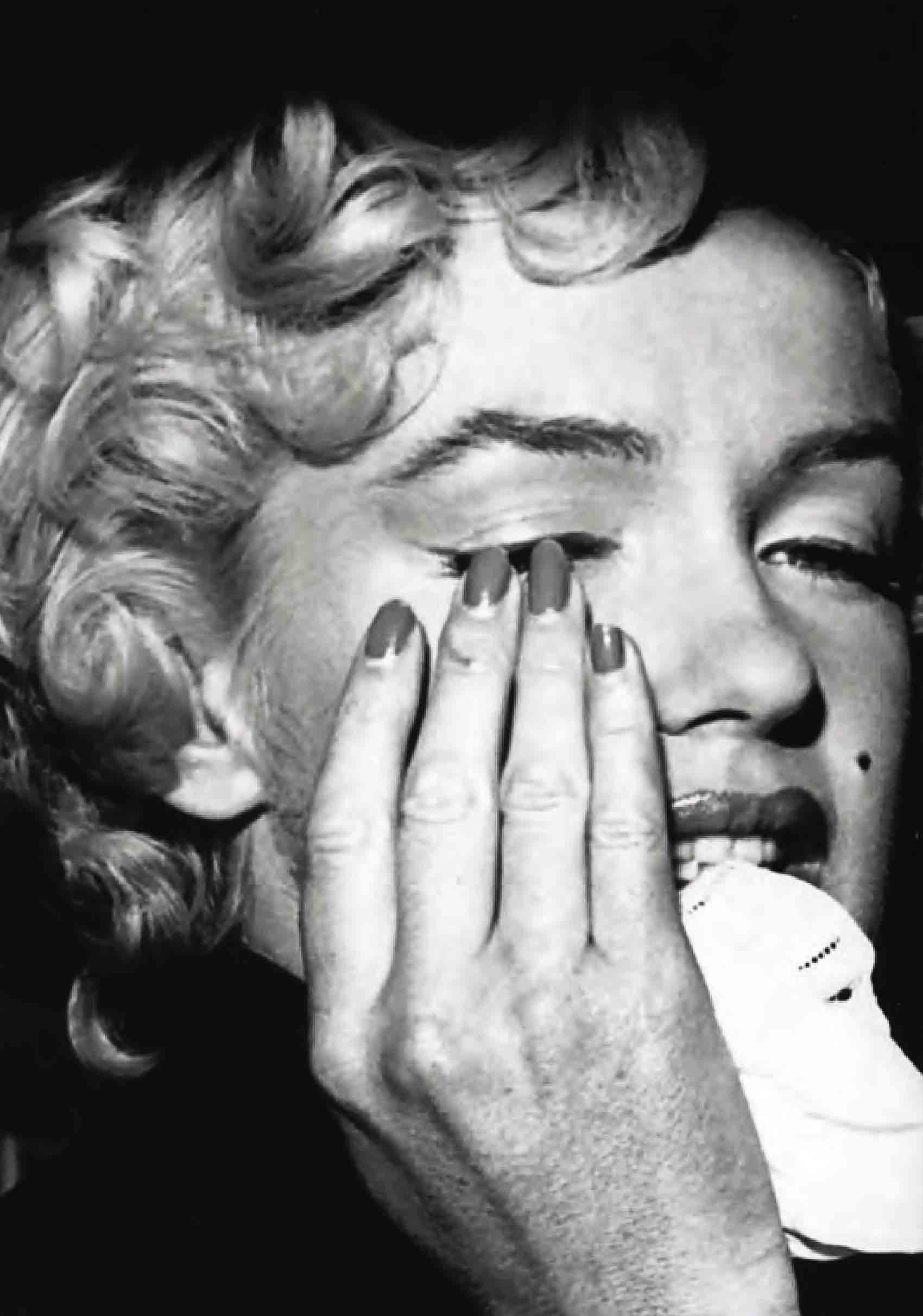
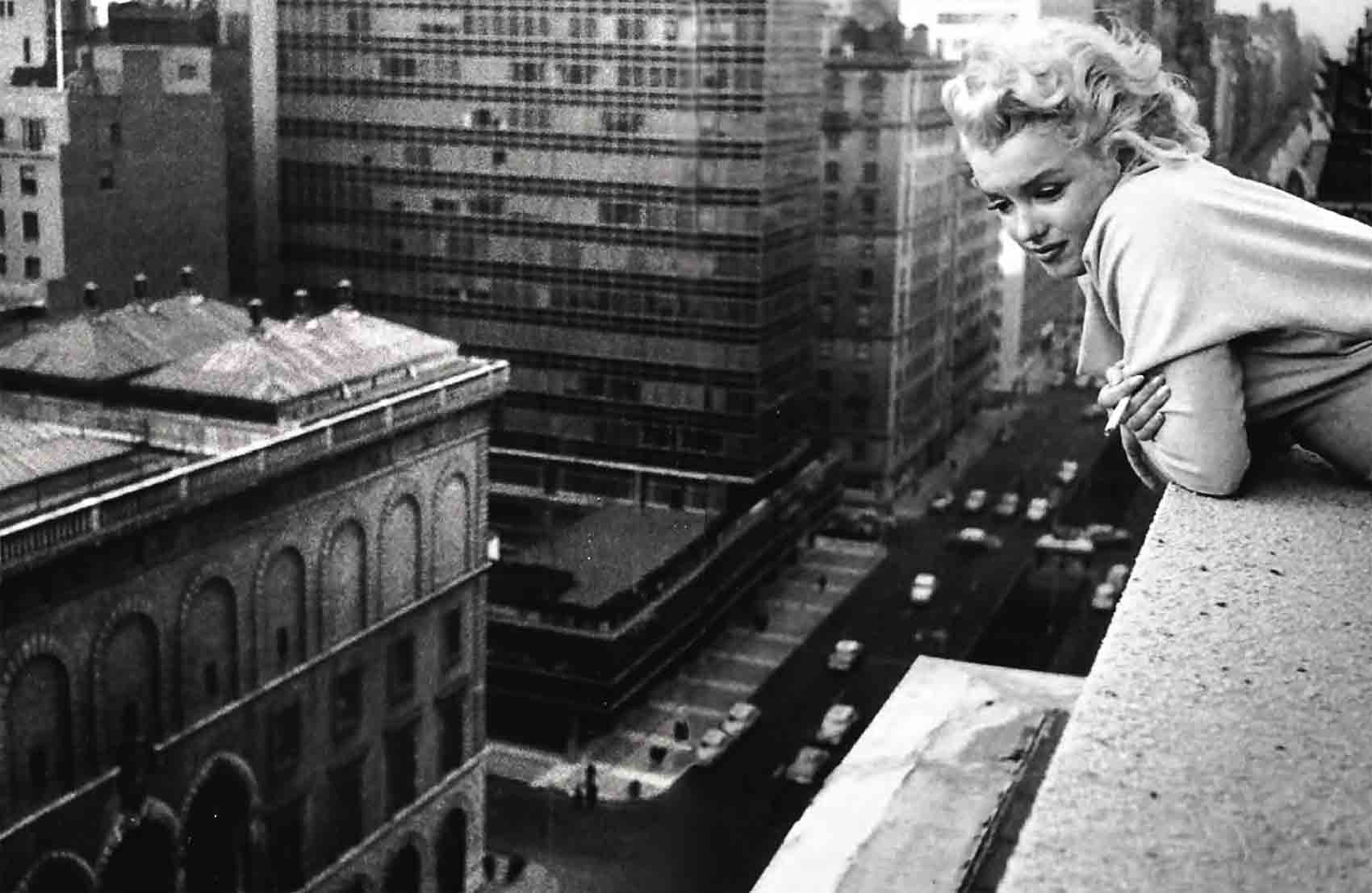
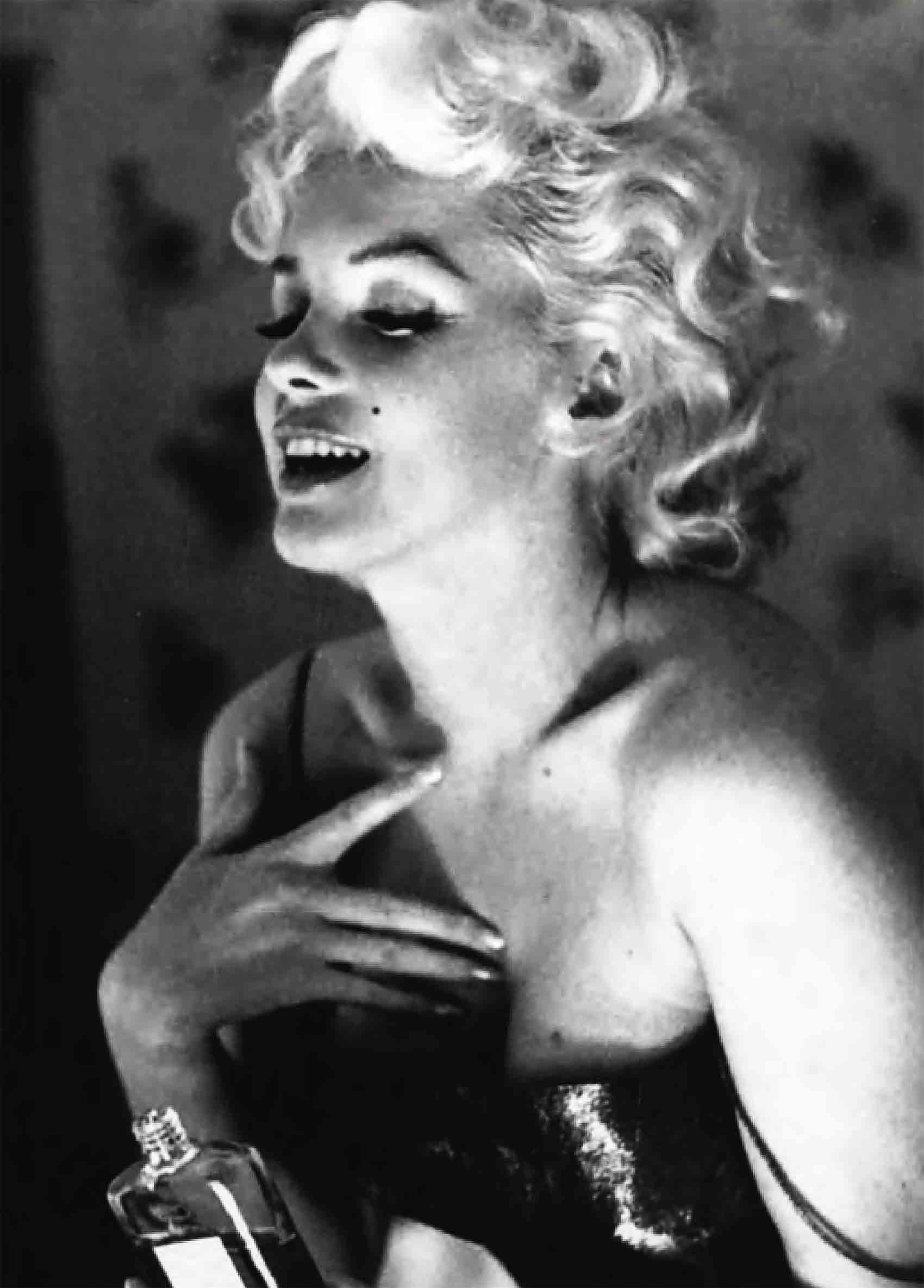
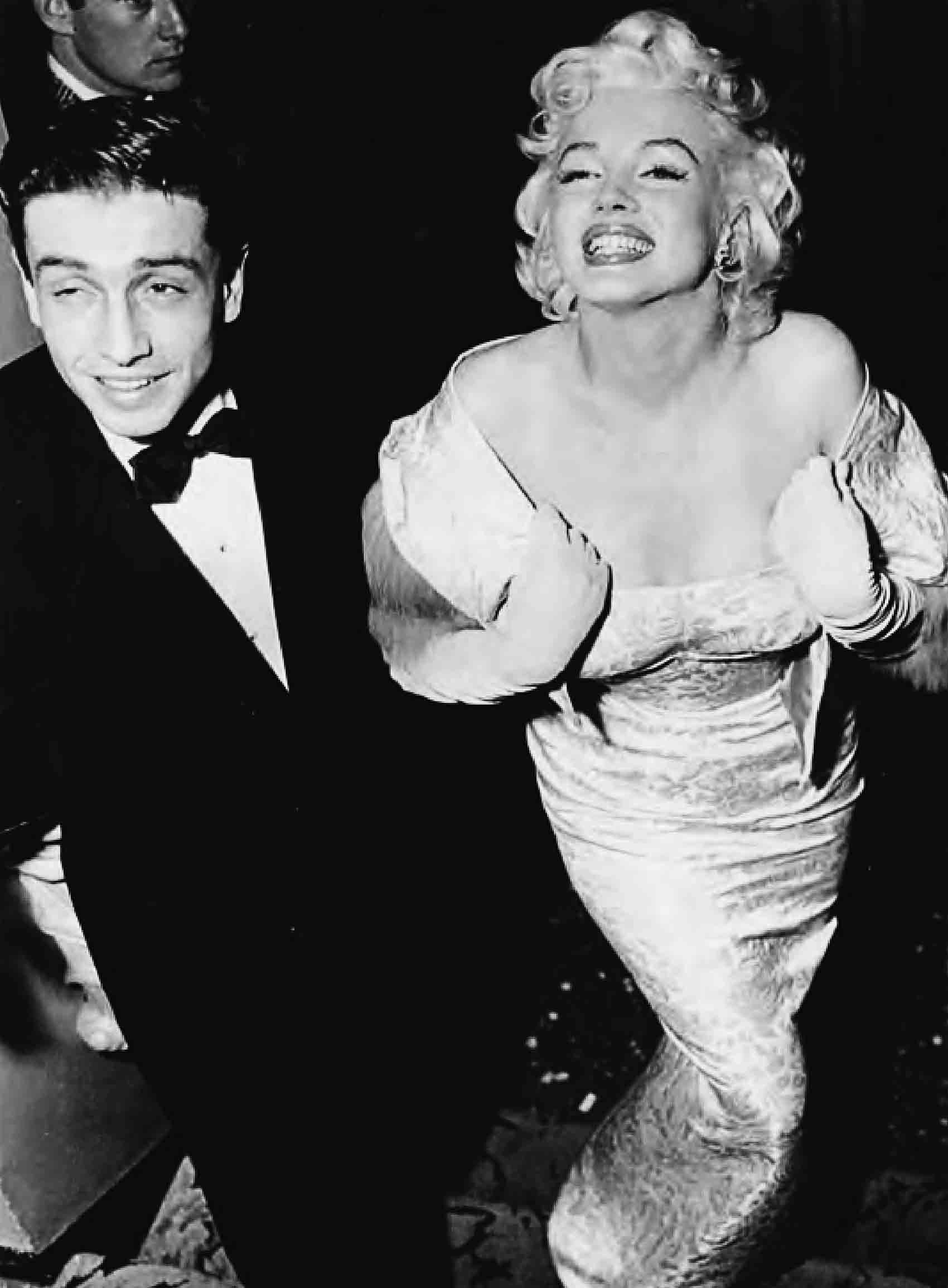
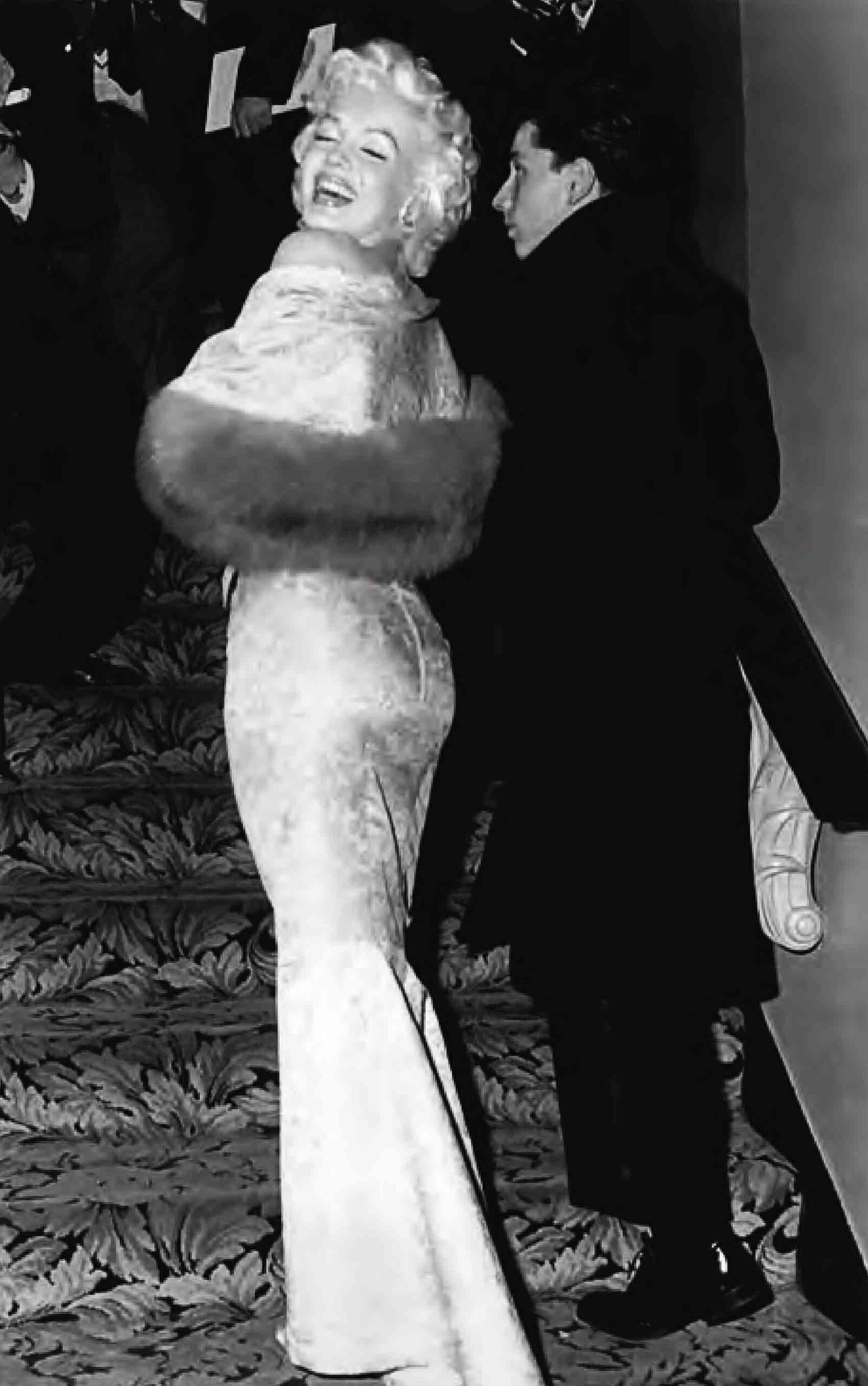
January 15, 1955 Marilyn’s absence from Hollywood and her private initiative with Milton Greene lead 20th Century-Fox to announce another suspension. During a press conference in New York arranged by Milton H. Greene, Marilyn reveals her new dramatic ambitions, including the desire to play Grushenka in The Brothers Karamazov, a wish the press comments on sarcastically. 20th Century-Fox counters by pointing out that M.M. is bound to the studio until 1958, and that they see no necessity to honor her wishes for future roles. “In Hollywood last week Marilyn got a brusque reminder that she is firmly under contract to the studio until 1958. Fox issued a paper: ’20th Century-Fox is very satisfied with both the artistic and financial results from the pictures in which Miss Monroe has appeared. . . . 20th Century- Fox has no intention of granting Miss Monroe’s request that she play in Brothers Karamazov.’ ” (Time, January 24, 1955)
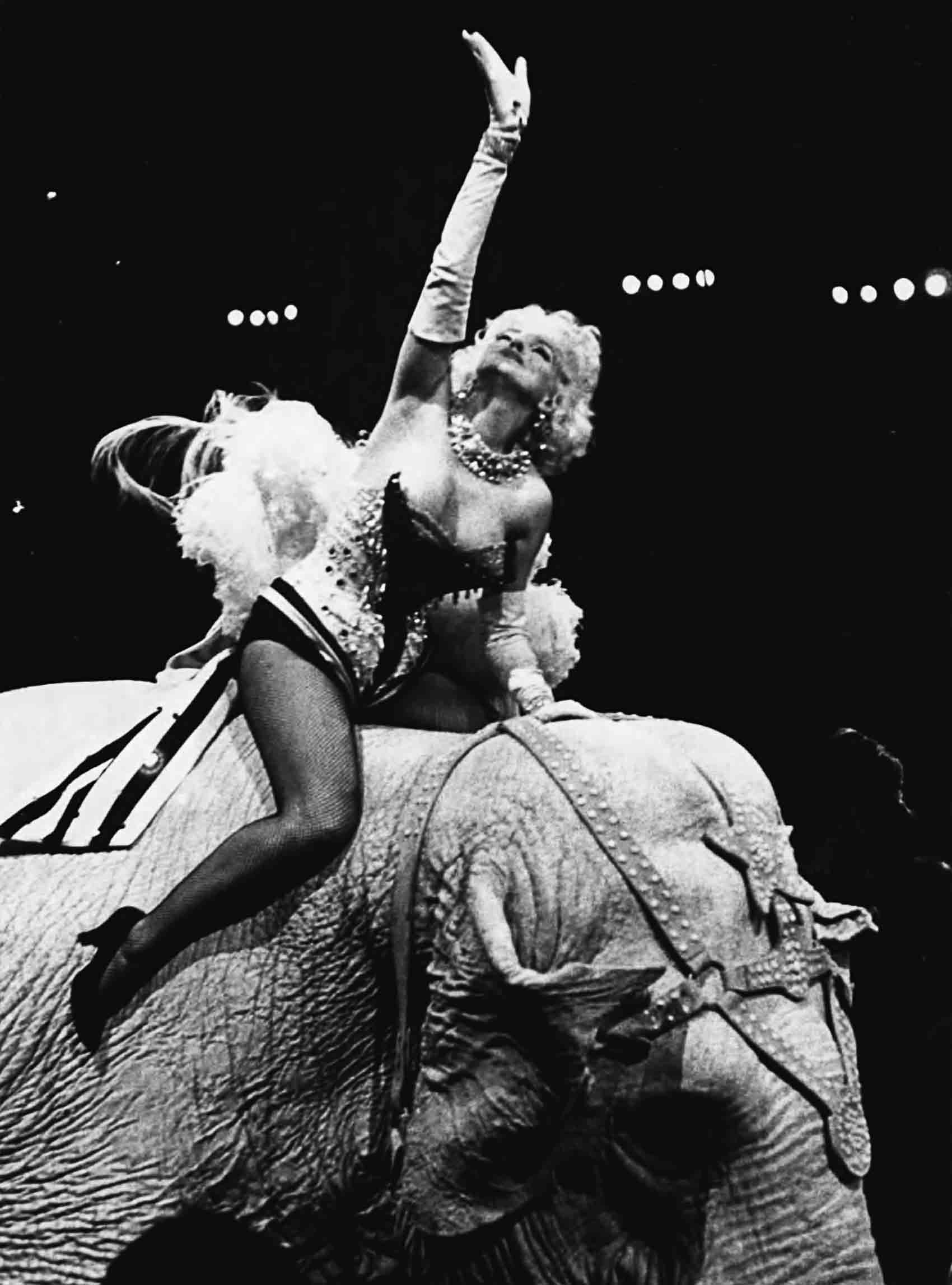
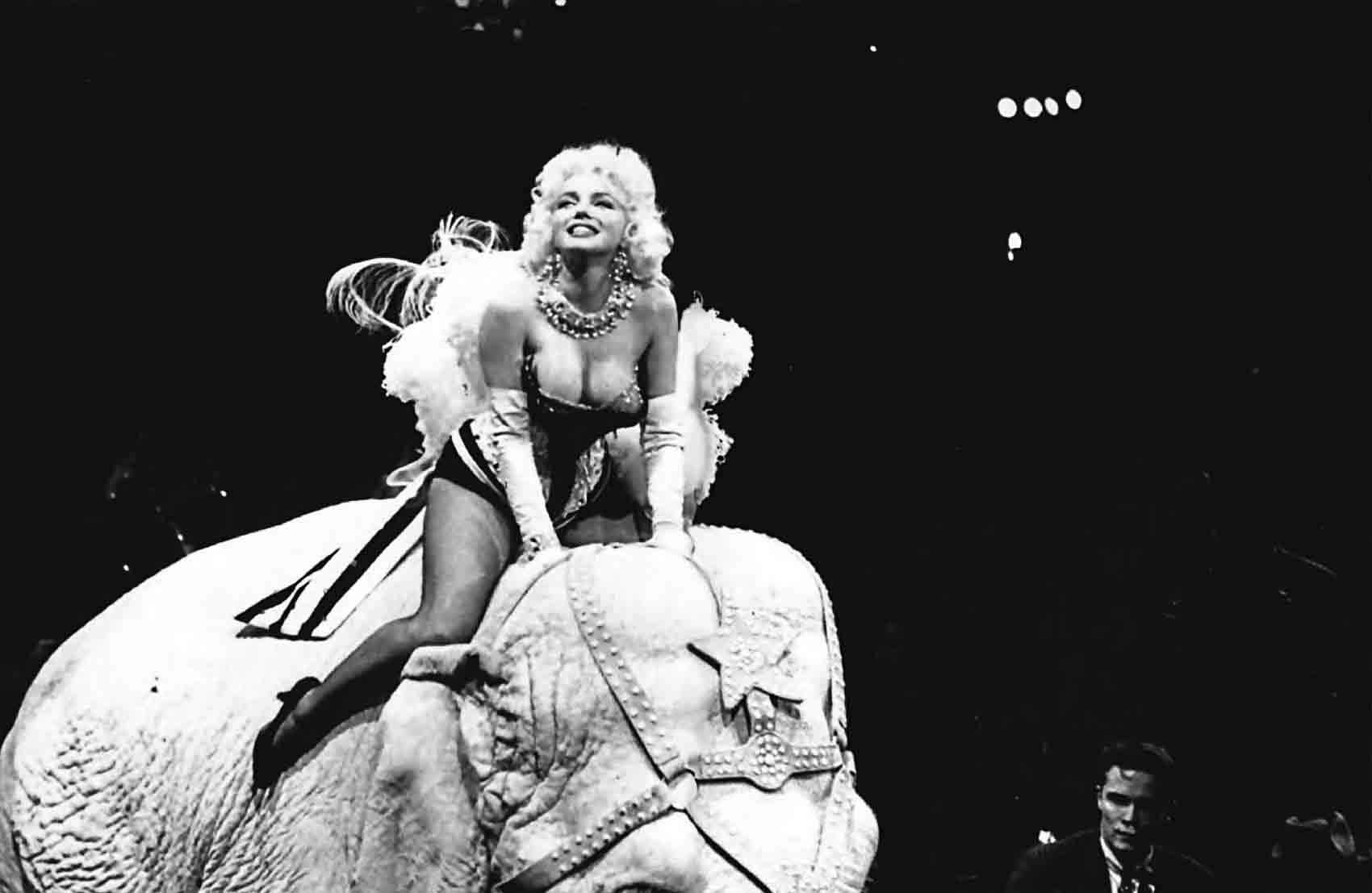
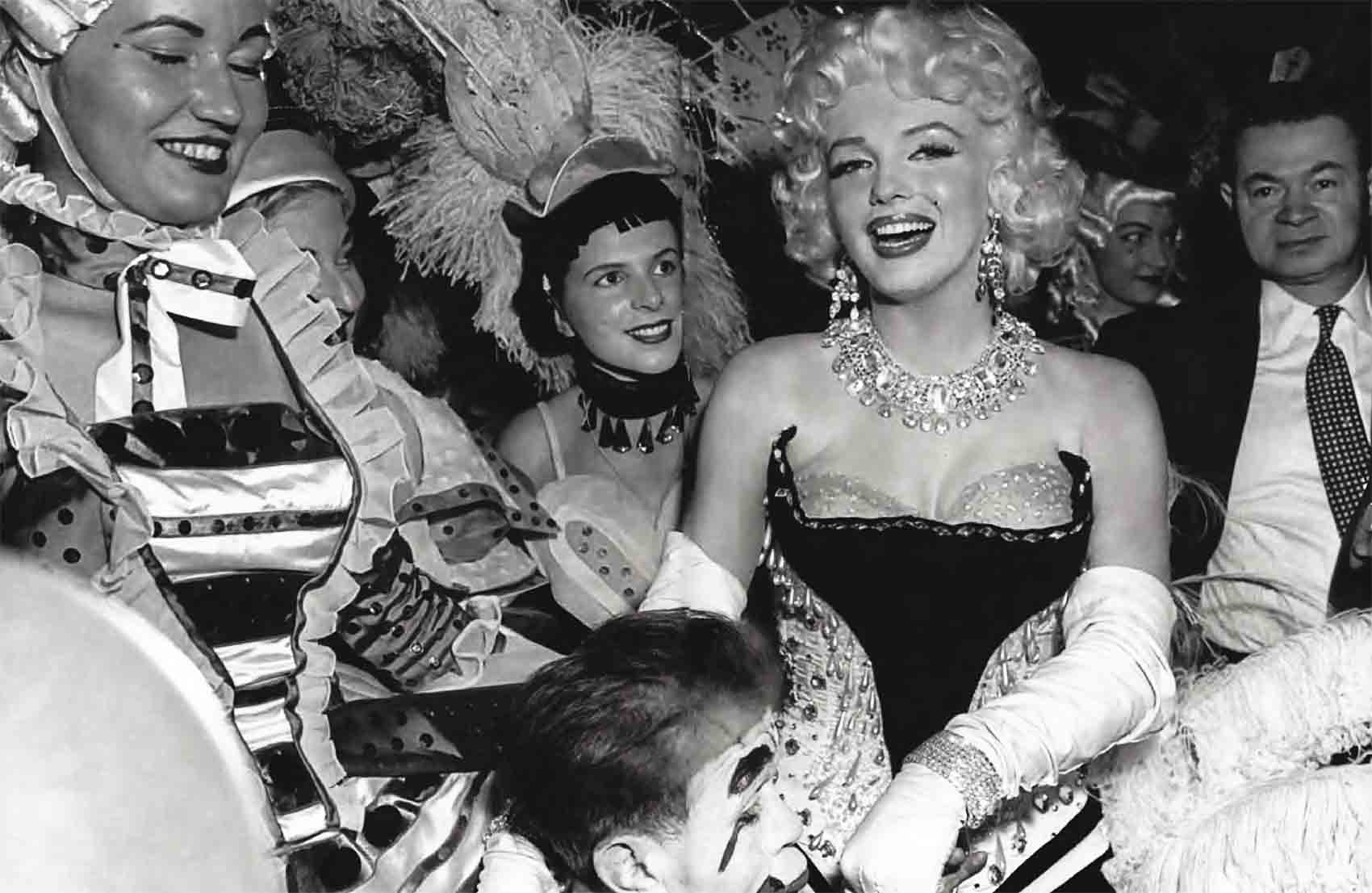
March 31, 1955 Marilyn Monroe rides on a pink-painted elephant in Madison Square Garden. The occasion is the benefit for the Mike Todd Foundation for victims of arthritis and rheumatism. Twenty-five thousand spectators enthusiastically applaud her appearance.
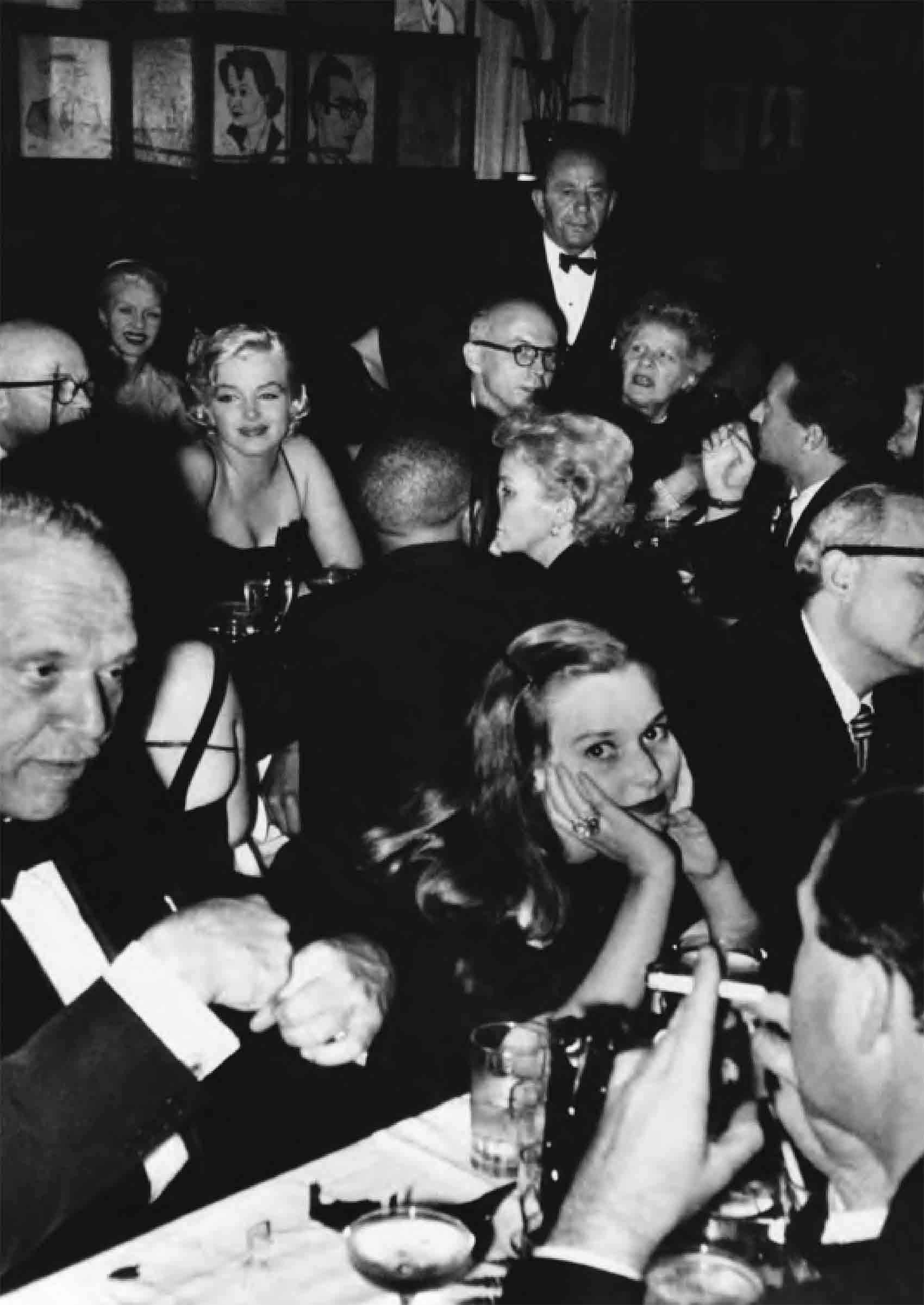
April 8, 1955 On Good Friday at breakfast time, Milton Greene and Marilyn’s house in Connecticut is beseiged by several TV crews. M.M. appears on Edward R. Murrow’s famous interview program “Person to Person,” which is seen by more than fifty million viewers.
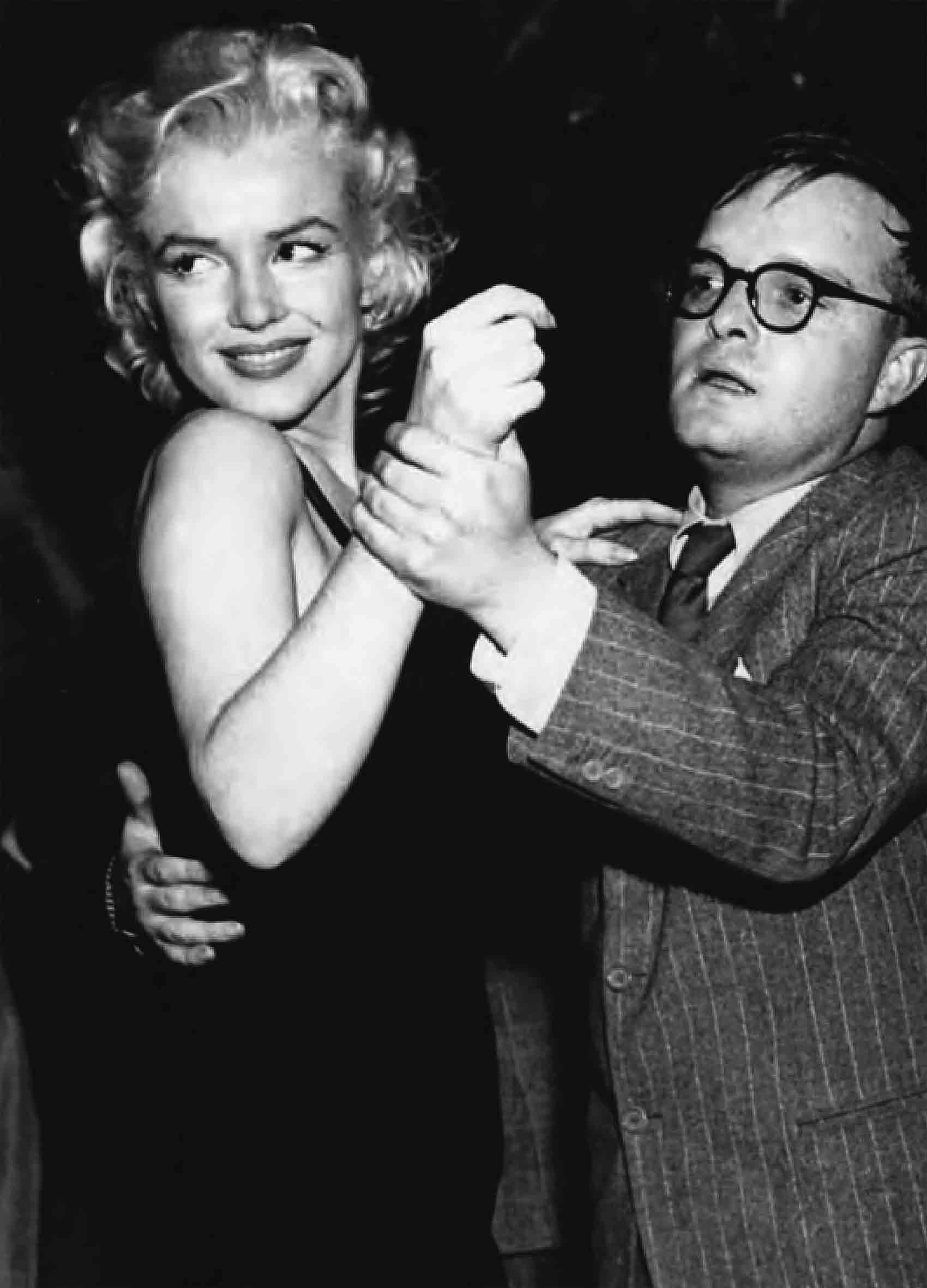
Spring 1955 Marilyn makes concerted efforts to fill in the gaps in her education, at least in the professional realm. She acquired Max Reinhardt’s private library at an auction in December 1952 (and sold it shortly thereafter at cost to Reinhardt’s son Gottfried). For seven years she has been taking drama lessons from Natasha Lytess and Michael Chekhov. Now she decides to switch to Lee Strasberg, breaking with Lytess. Strasberg’s New York theater workshop, the Actors Studio, is of great benefit to Marilyn. In the 1950s, actors such as Marlon Brando, James Dean, Eli Wallach, Anne Jackson, Paul Newman, Montgomery Clift, Steve McQueen, and Tom Ewell are among the most prominent to attend the studio, which has become one of the most influential setups of its kind.
At this time, Marilyn’s psychiatric treatment, which began around 1954, intensifies. She often goes five times a week to her female psychiatrist. Dr. Hohenberg, on the New York East Side.
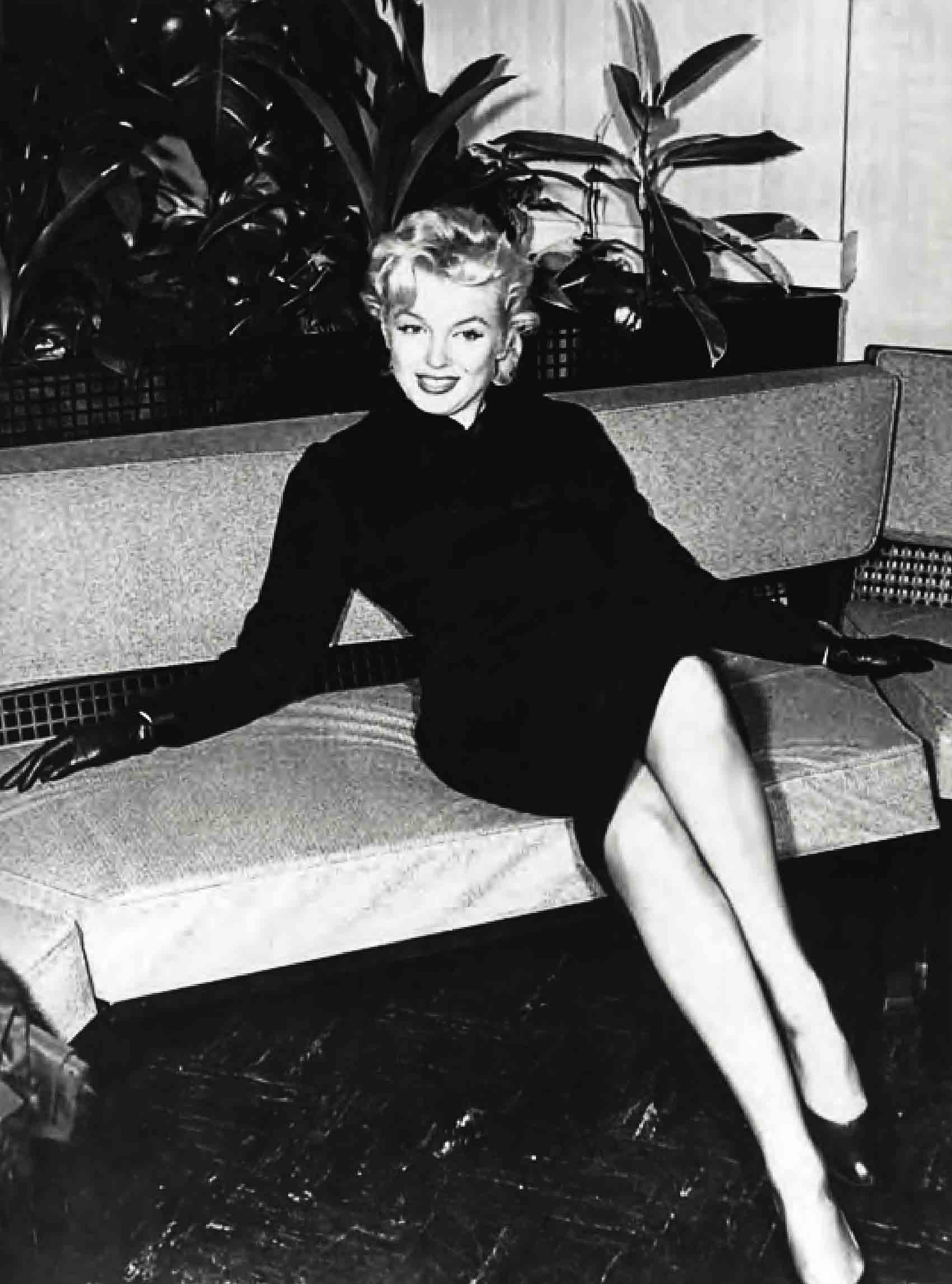
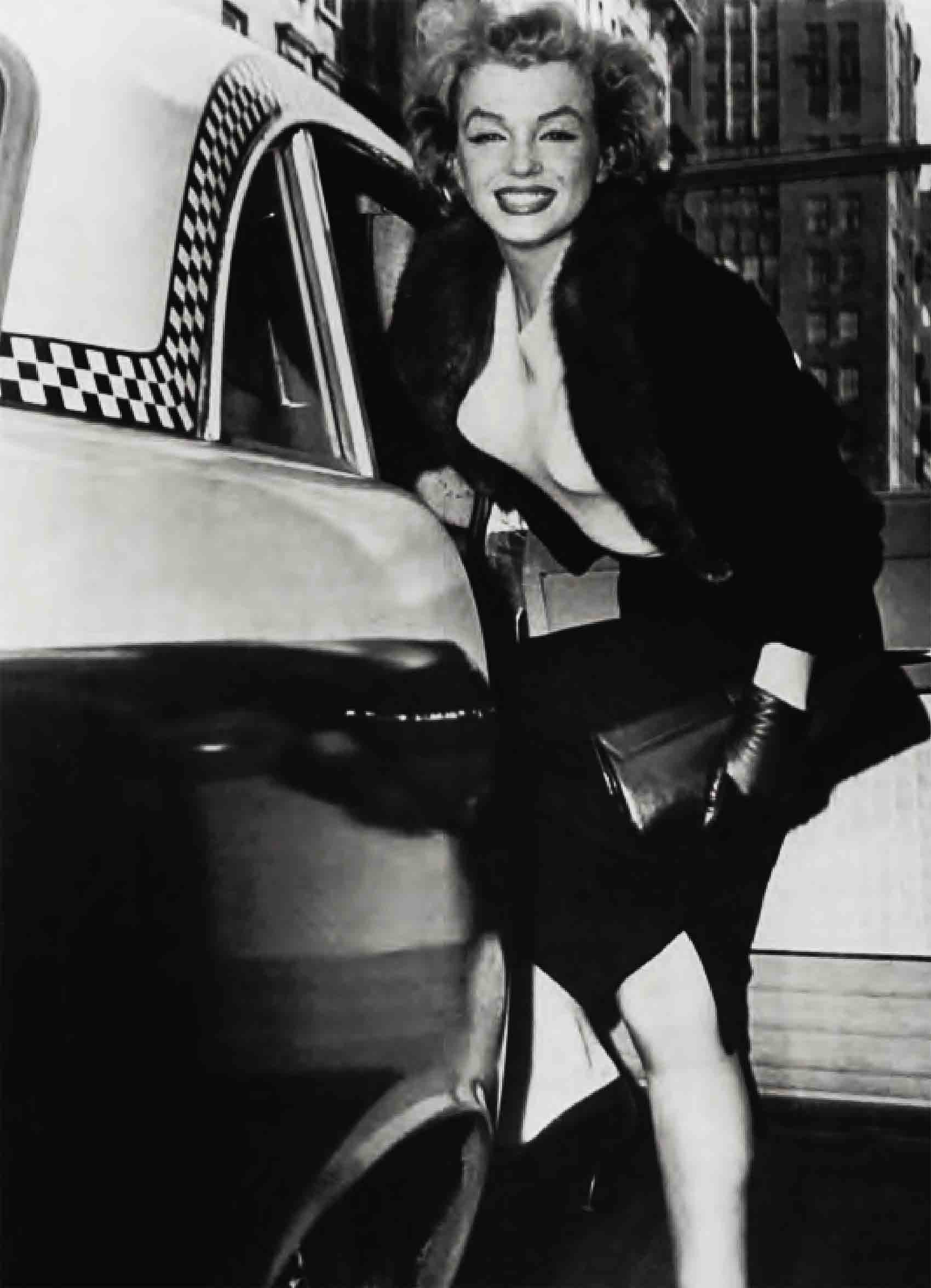
Photograph about 1955.
June 1, 1955 On Marilyn Monroe’s twenty-ninth birthday. The Seven Year Itch premieres.
November 1, 1955 Marilyn’s divorce from Joe DiMaggio is granted.
December 31, 1955 On the basis of the phenomenal box-office success of The Seven Year Itch, Darryl Zanuck concludes a new contract with Marilyn, the best of her career. A clause very important for Marilyn gives her the right to reject any film that in her opinion is not “first class”; the same applies to directors and cameramen. This contract change, negotiated by Marilyn and Milton Greene, guarantees her a high level of artistic freedom, the prerequisite for her long-dreamed-of career as a serious actress. In addition, the clause gives her greater scheduling leeway to allow her to pursue projects in her own firm.
January 16, 1956 A press bulletin confirms that both parties have reached agreement on contested points in previous contracts. “Last week as the battle ended, the clear winner was Marilyn Monroe Productions, Inc.” (Time) In 1970 Zanuck admits that he had underestimated Marilyn:
“One day, a great friend of mine, Joseph M. Schenck, brought over to my home in Palm Springs this very beautiful girl who was also on the plump side. I didn’t jump up and say, ‘Oh, this is a great star,’ or anything like that. Later on, Joe said, ‘If you can work her in some role or something, some, you know, supporting role, do so.’ I did, but I didn’t think that I had found any gold mine. John Huston gave her a hell of a good role in The Asphalt Jungle’ (1950). Jesus, she was good in it. I thought, it must have been the magic of Huston, because I didn’t think she had all that in her. But then I put her in ‘All About Eve’ (1950), and she was an overnight sensation.” (Look magazine, Novembers, 1970)
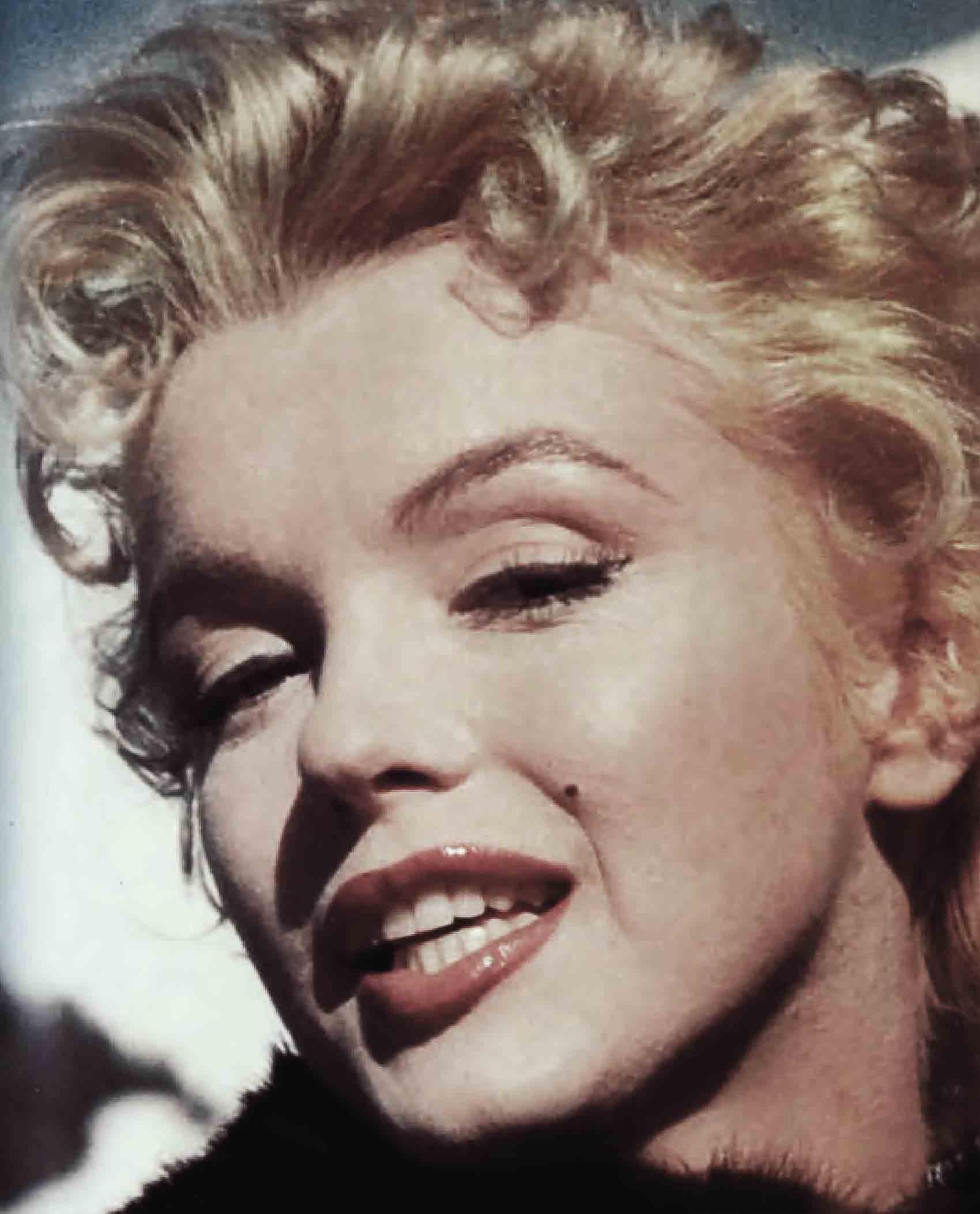
February 1956 Marilyn’s performance of a scene from Anna Christie at Strasberg’s Actors Studio in New York wins the applause of a select audience.
February 9, 1956 Marilyn holds a press conference with Sir Laurence Olivier at the New York Plaza Hotel to announce her next project: the filming of Terrence Rattigan’s play The Sleeping Prince.
February 25, 1956 After a year of self-imposed exile, Marilyn returns to Hollywood.
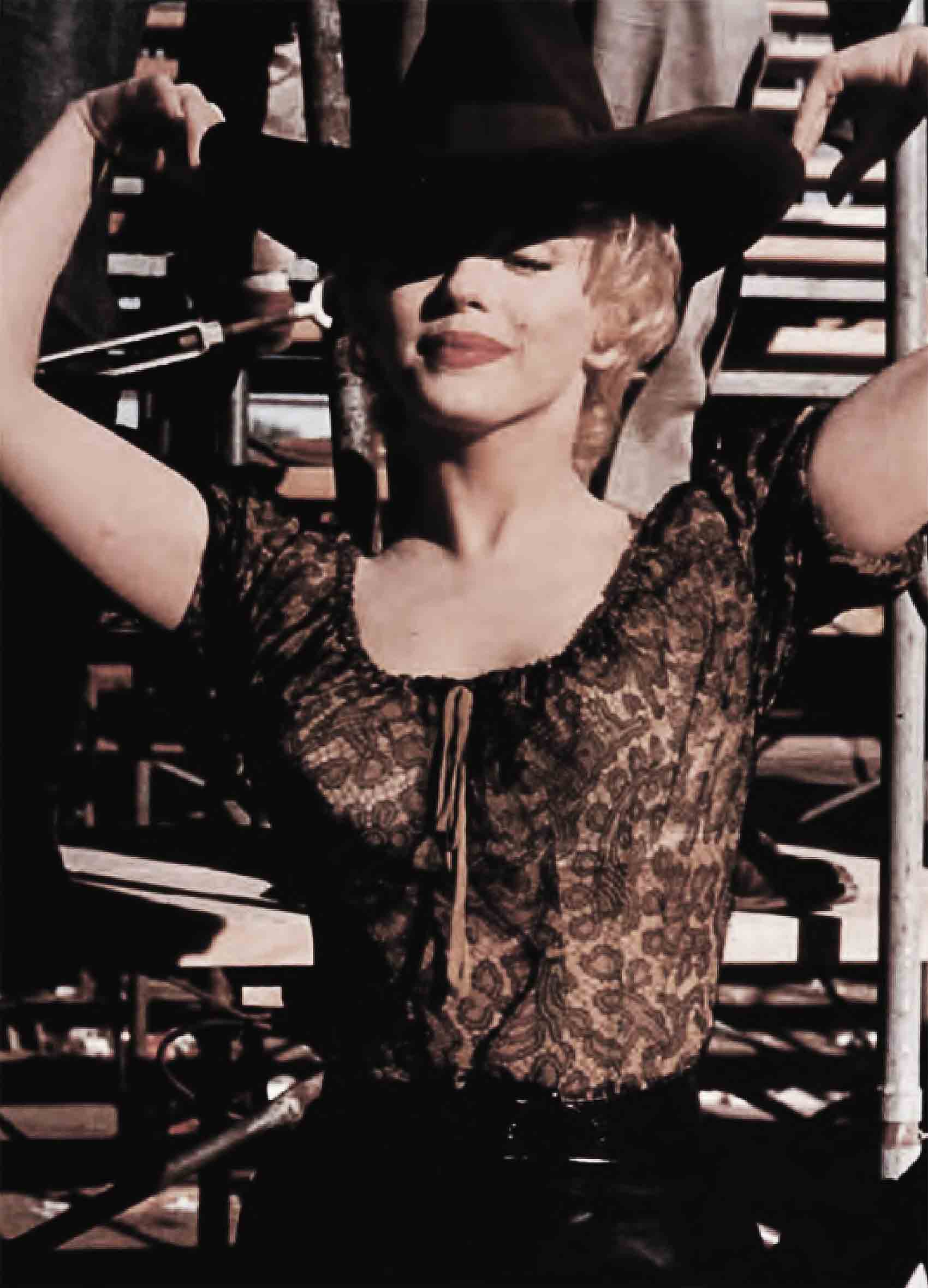
May 3, 1956 The shooting for Bus Stop begins. This is the first project largely chosen by Marilyn herself, including the director, Joshua Logan, and the material, based on a successful Broadway comedy. Marilyn’s friend and partner Milton Greene is responsible for stills and makeup, and she selects her own costumes. In spite of these concessions and her successes, her New York psychiatrist has to be flown in to stabilize her emotionally.
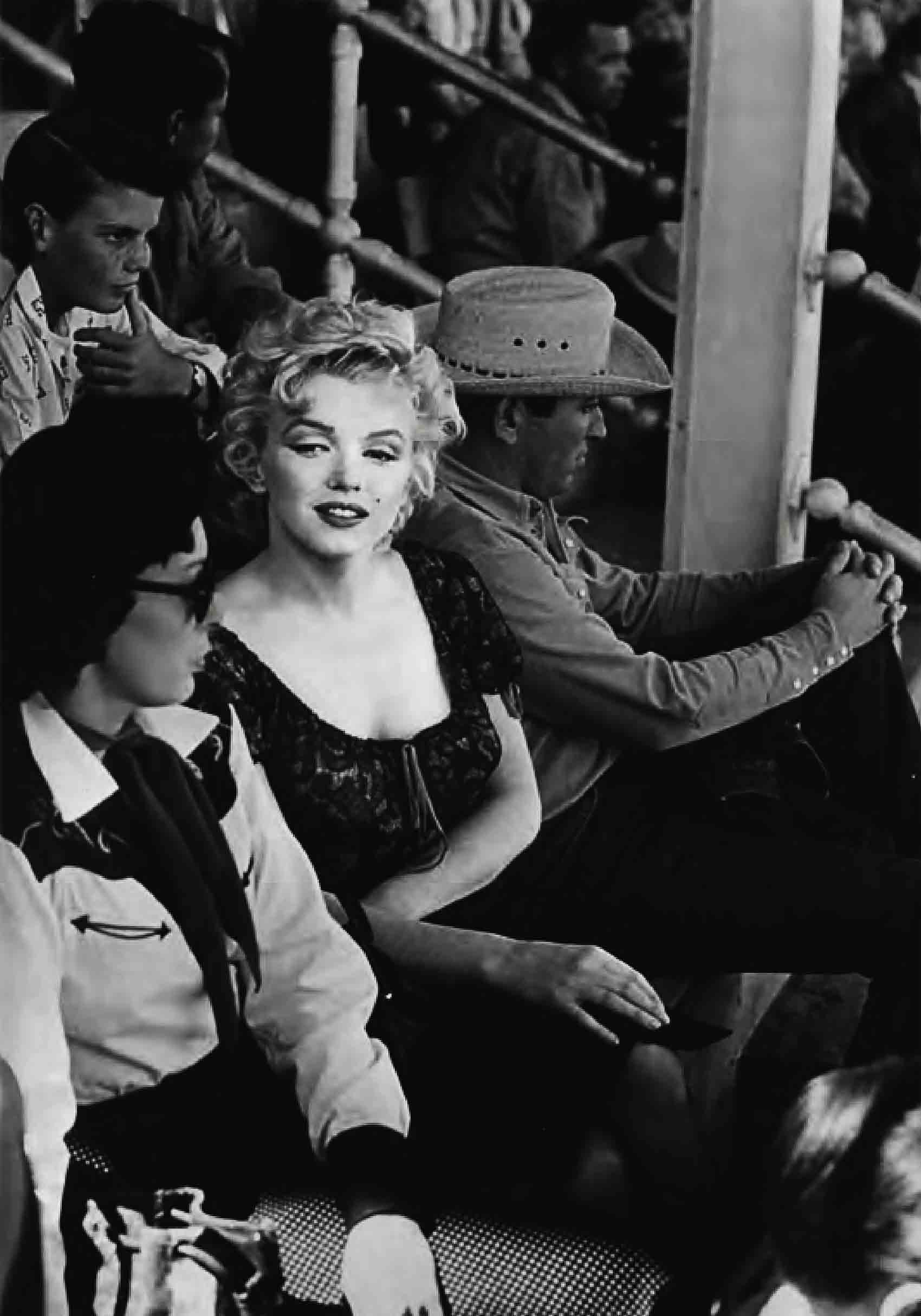
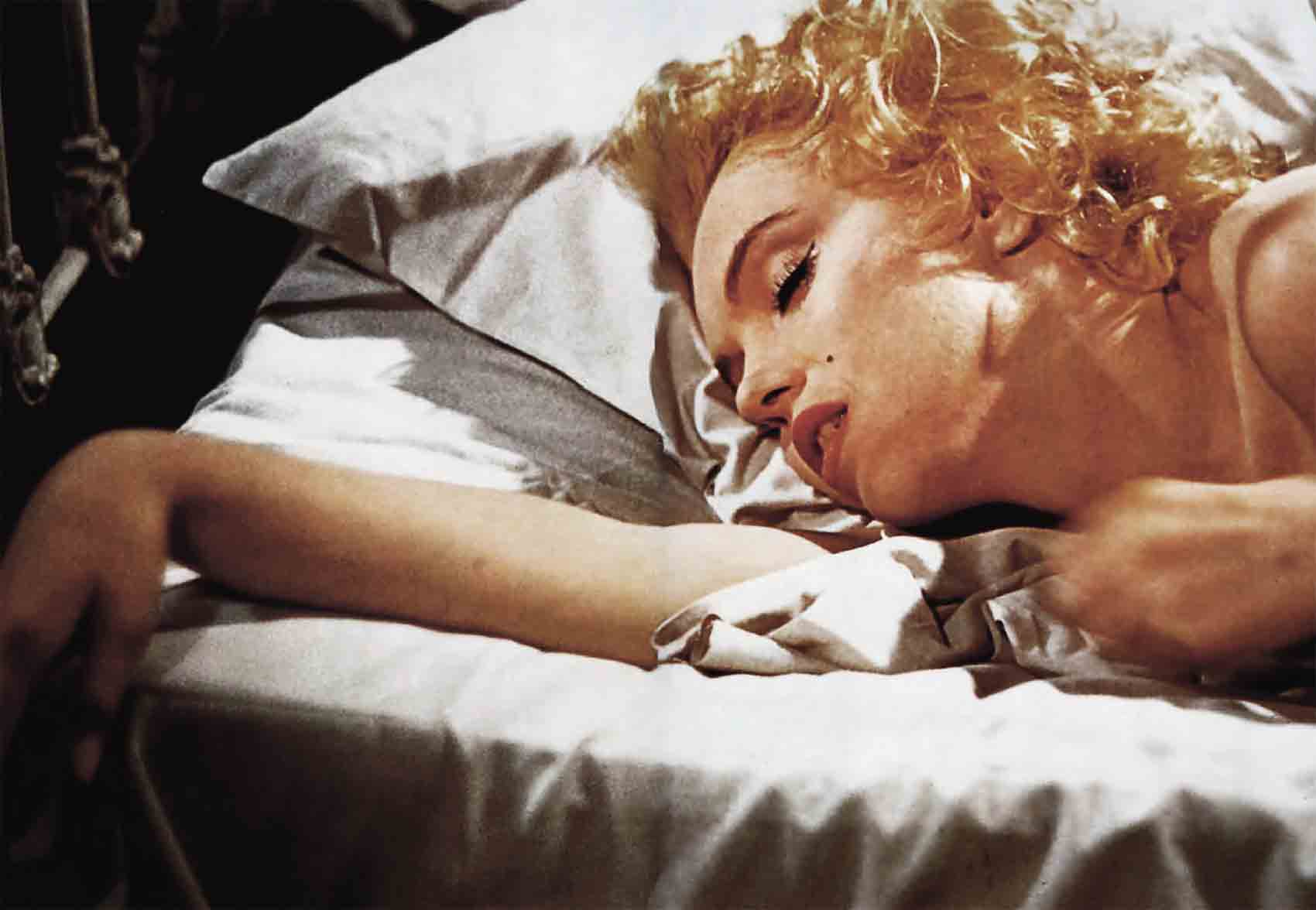
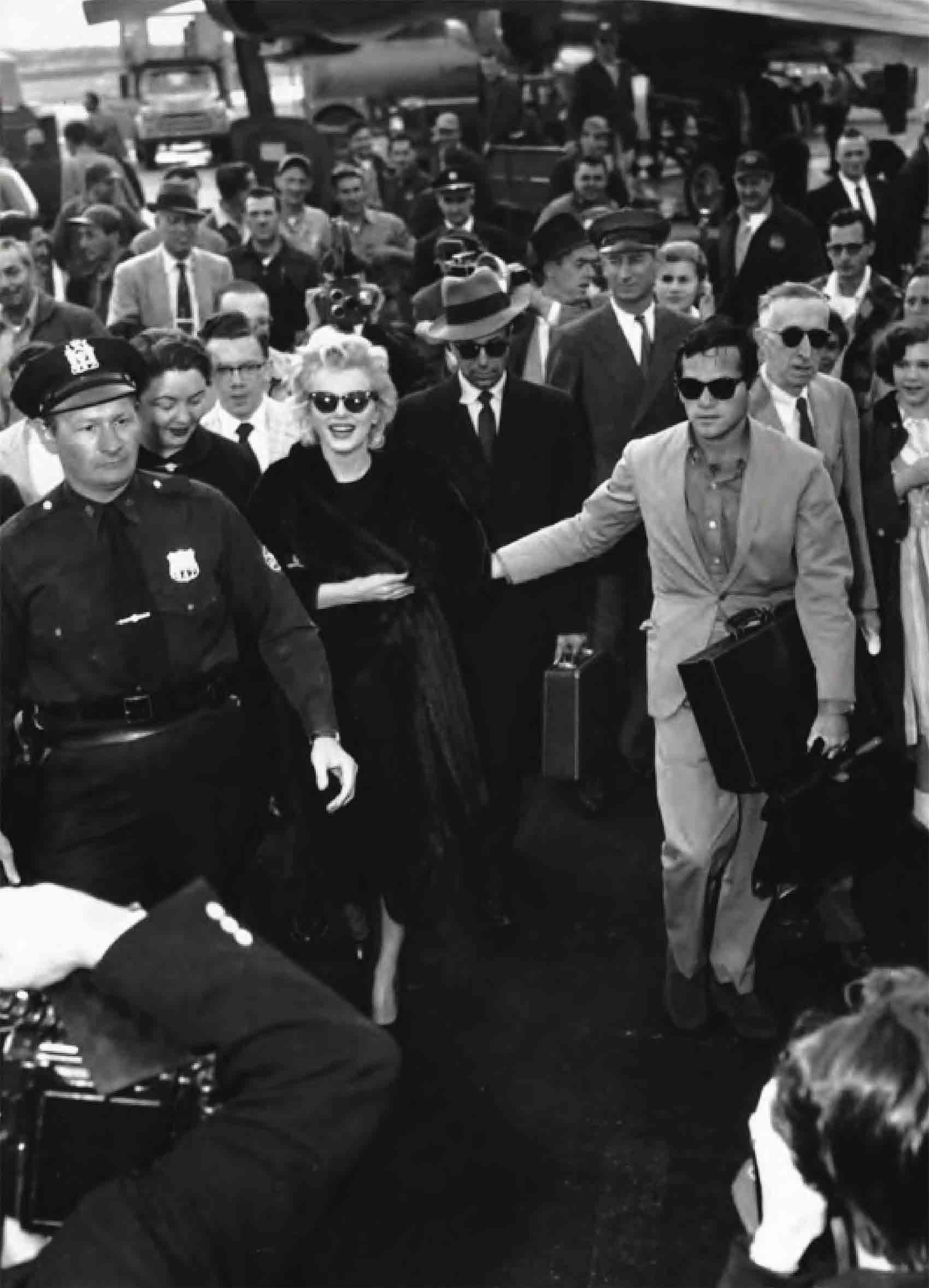
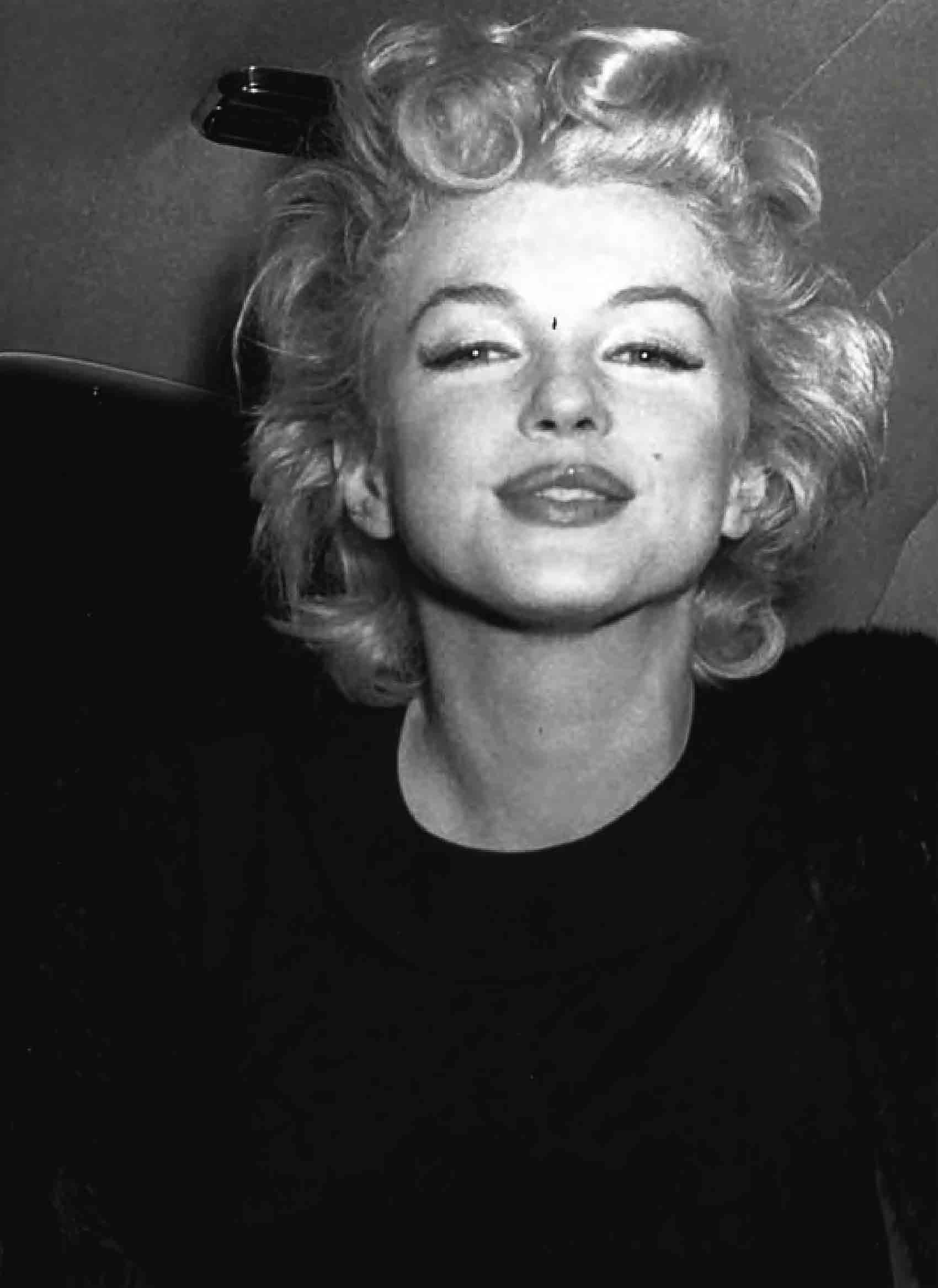
May 14, 1956 The cover story for Time is about Marilyn.
June 2, 1956 After the filming of Bus Stop is concluded, M.M. returns to New York.
It is a quote. SCHITMER ART BOOKS




